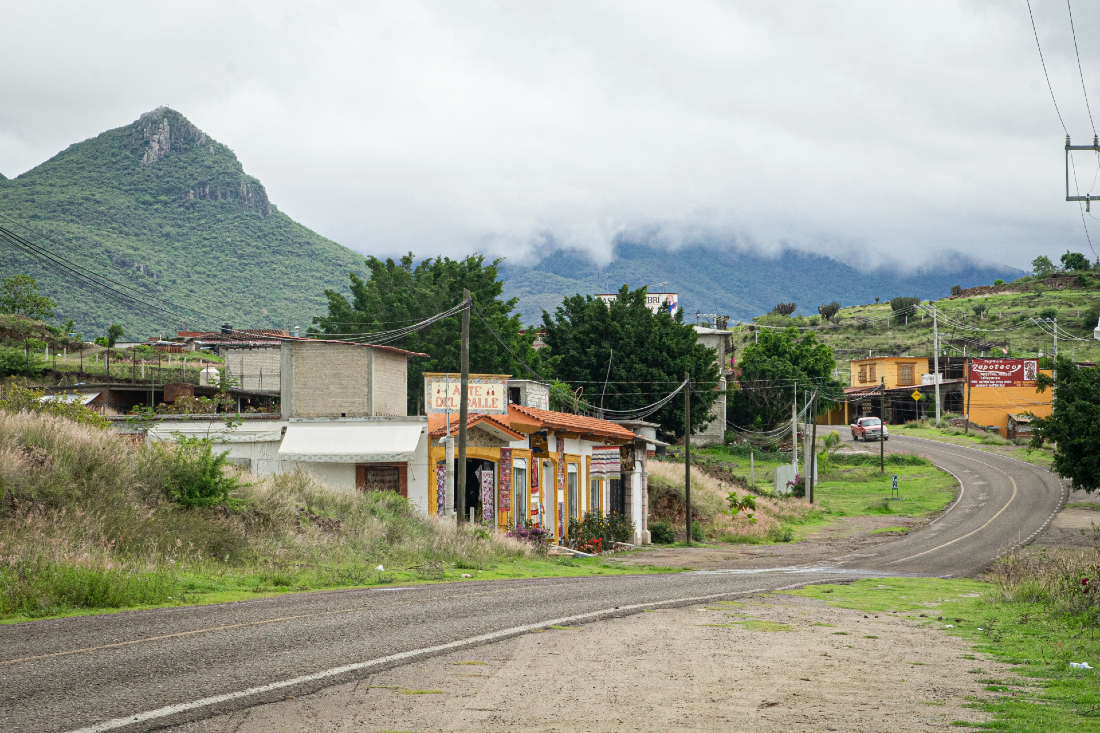
by Barbara Erickson
Jacobo Mendoza is Zapotec from the famous weaving town of Teotitlan del Valle in the valley of Oaxaca. His family has been weaving since before the Spaniards arrived.
The Oaxaca region is home to more ethnic groups, more indigenous languages and more species of plants than any other region in Mexico, and indeed, more than most regions of the world.
The Zapotecs of the Oaxacan central valley are known as the “The Cloud People”. It only takes one visit to their ancient heartland to appreciate the name, the high cumulus clouds brushing the tops of the surrounding mountains cast their shadows all across the valley.
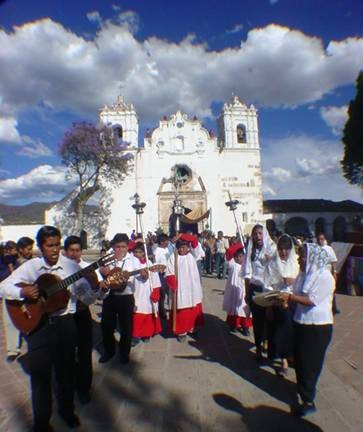
In Teotitlán del Valle, rugs and other textiles have been hand loomed since 500 BCE, long before the pedal loom was introduced by the Spanish. Zapotec textiles served as tribute for the Mixteca (Aztecs).
Jacobo is a prize winning weaver of his generation, as well as a being recognized for all his innovations with dyes. He, his wife Maria Luisa and his children all weave and are experts in creating an amazing array of colors using only natural dye stuffs and non-toxic fixatives.
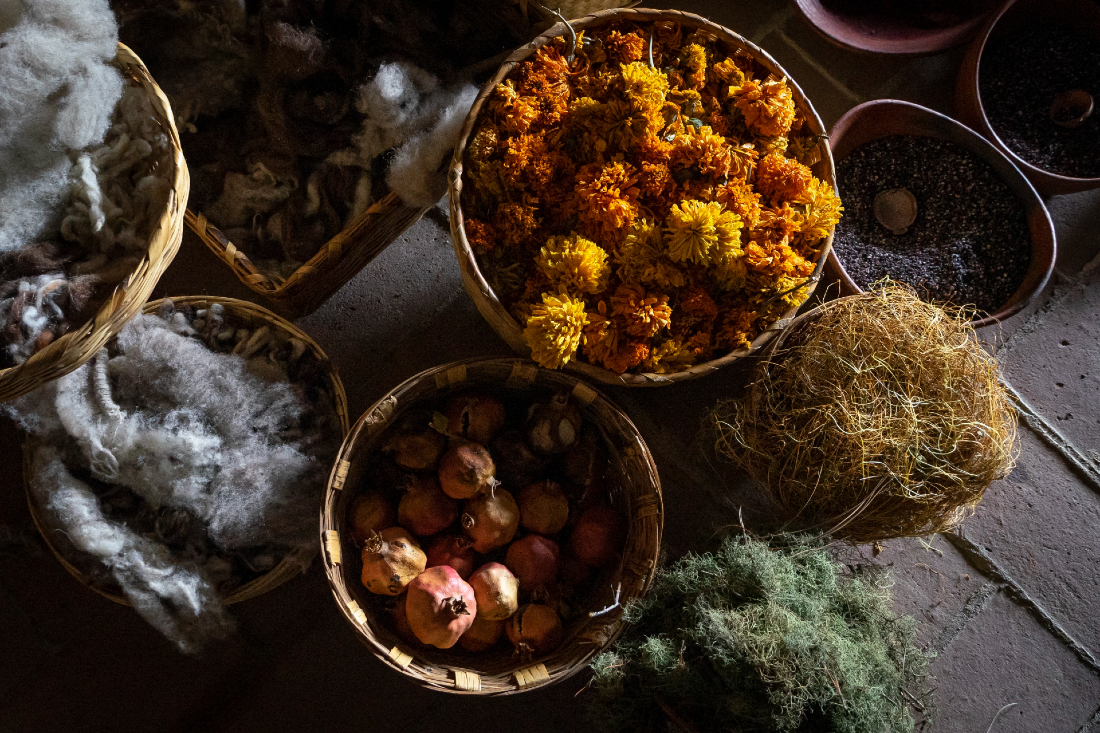
Marigold, Pomegranate, Moss, Cochineal, Bark...
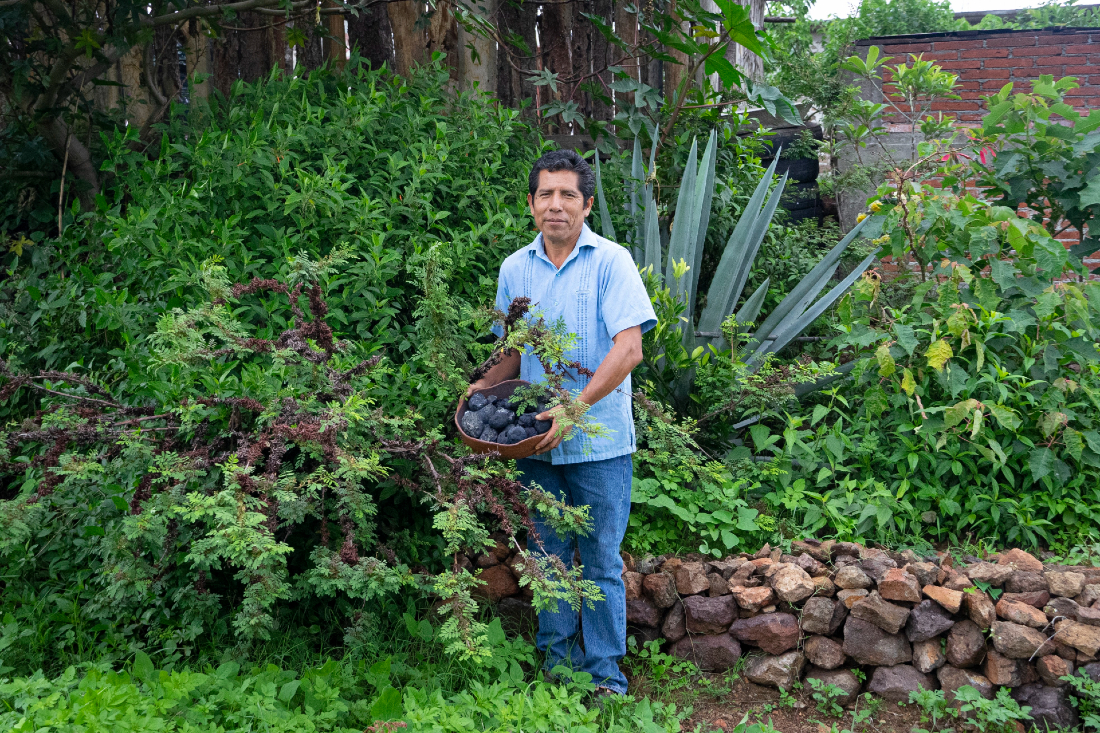
Indigo (the plant) and the dye stuff made from it. Like lumps of blue coal.
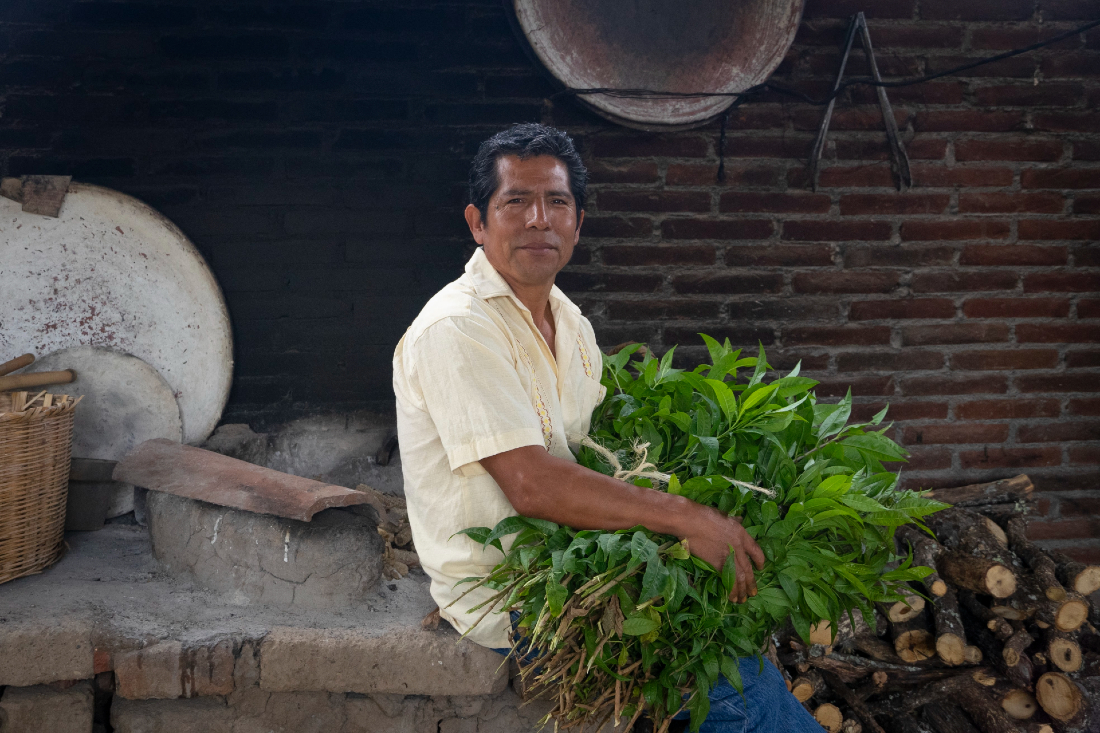
Maroosh - a local plant Jacobo discovered in his yard, a beautiful yellow, midwives use it to bathe babies when they are born so they will be strong.
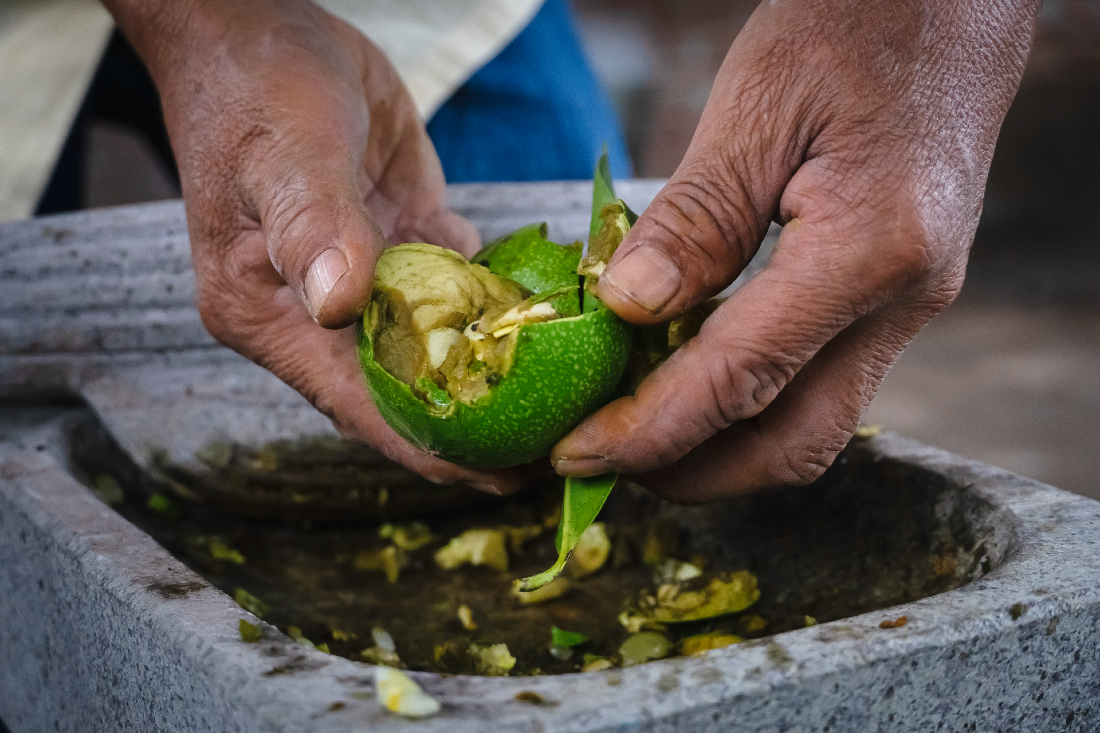
Black Sapote, a local fruit, delicious when ripe, a dark brown in dye when not.
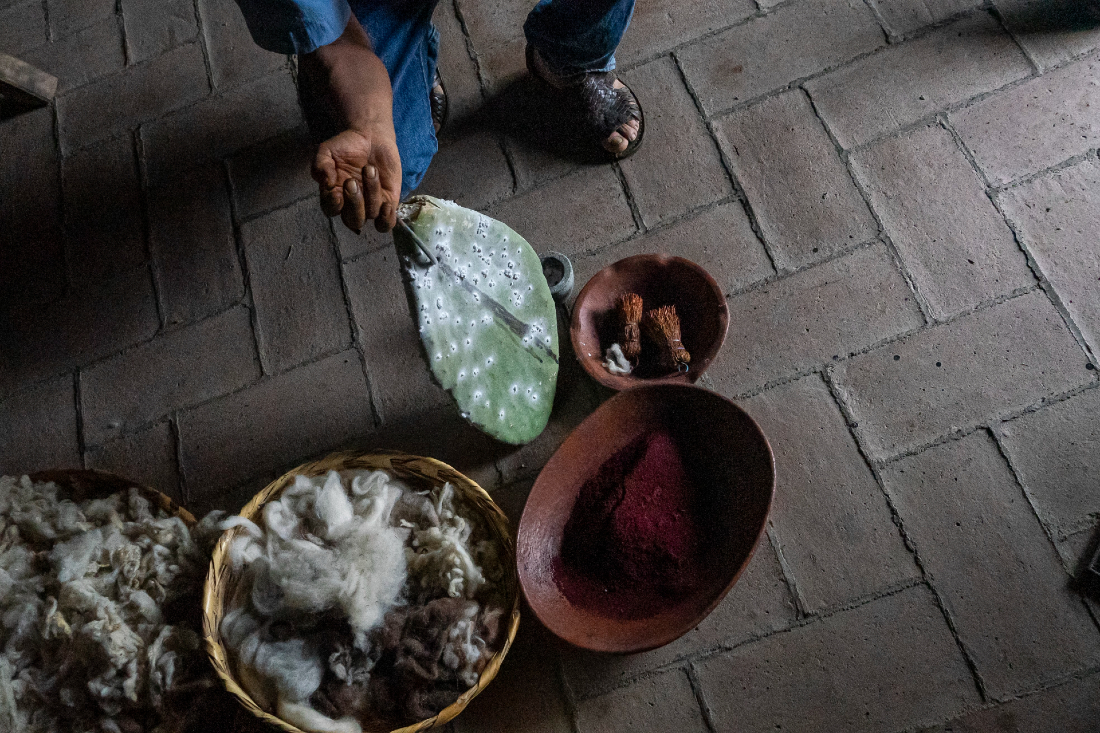
The most famous red - cochineal, a scale insect infecting the nopal.
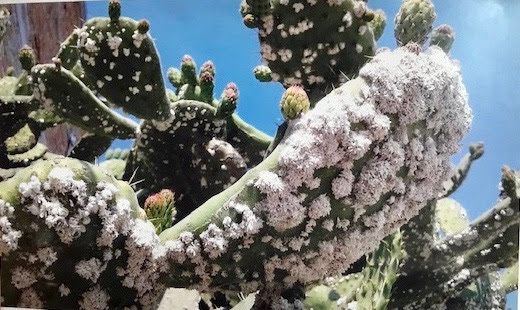
Wild Cochineal. Now it is cultivated in various forms, and is a costly dye stuff.
To make a beautiful one of a kind textile you must start with the threads. In the Mendozas' case they use local wool, cashmere, alpaca, silk and often weave fine threads of silver and gold into their fine pieces. To make a fine thread, you start by carding the wool, then spinning it carefully.
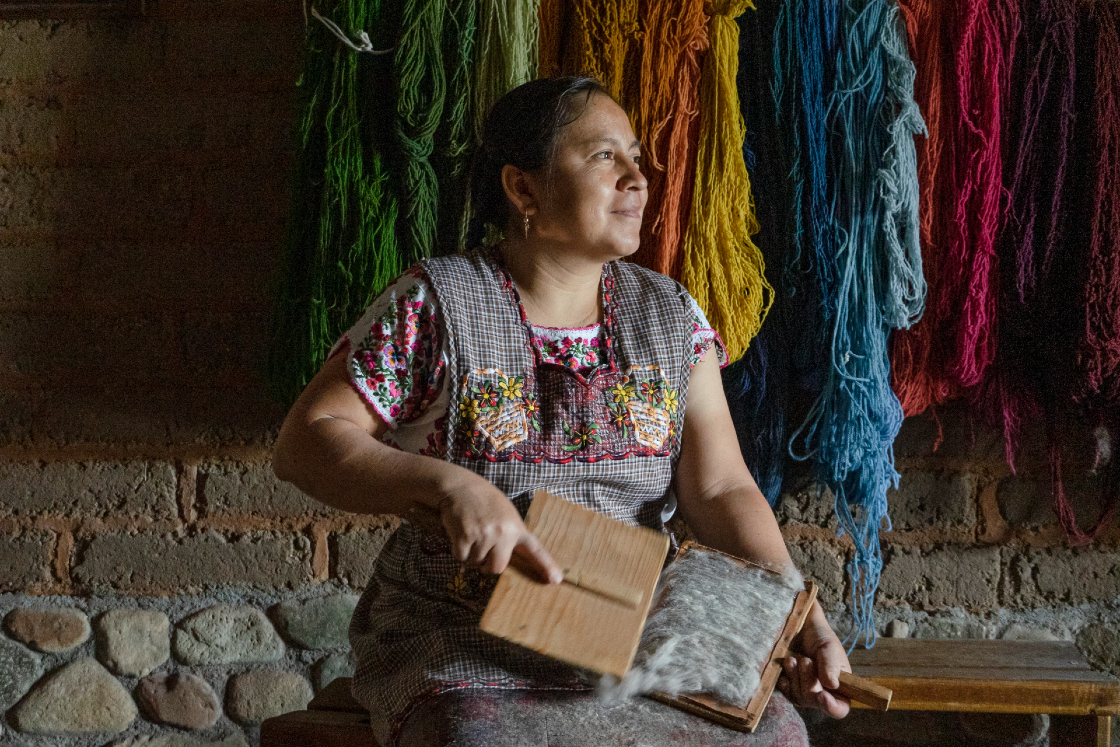

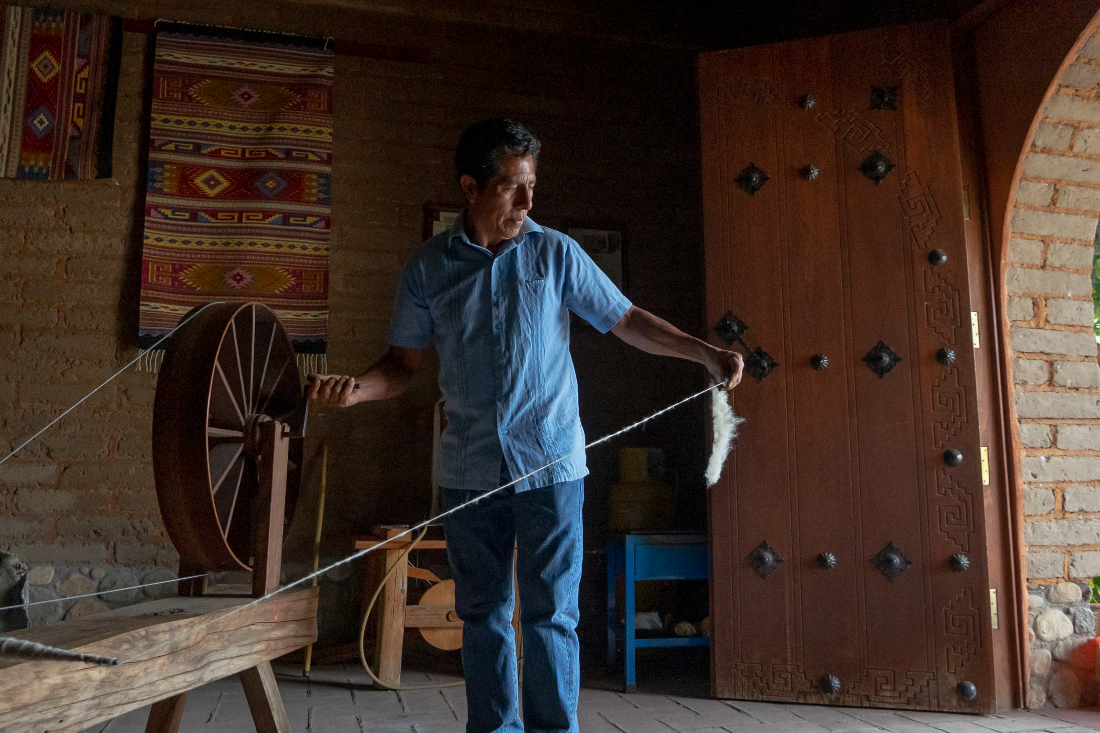
Expert spinners start when they are five years old, as do weavers in Teotitlan.
When the wool is ready and prepared in skeins, it is washed and prepared in a mordant (fixative bath) so it will be ready to accept the dye.
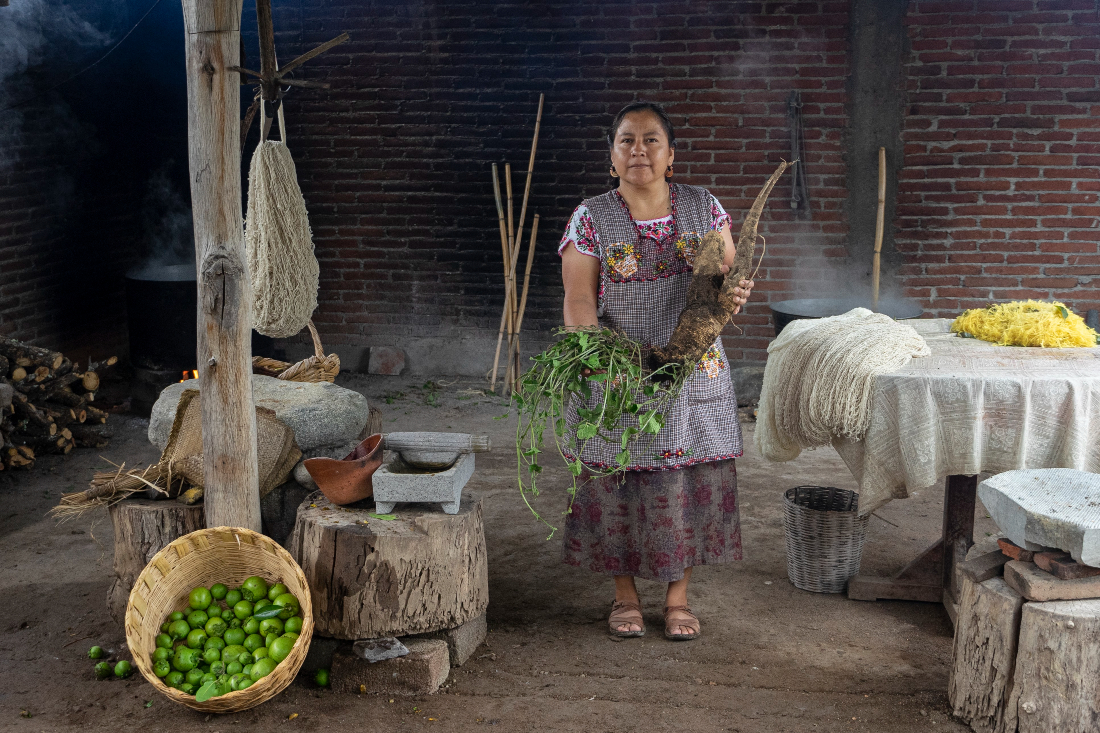
Maria Luisa holds an Amloe root, the traditional soap of the Zapotecs. She will prepare it to wash the wool before dying and she uses it as her only shampoo.
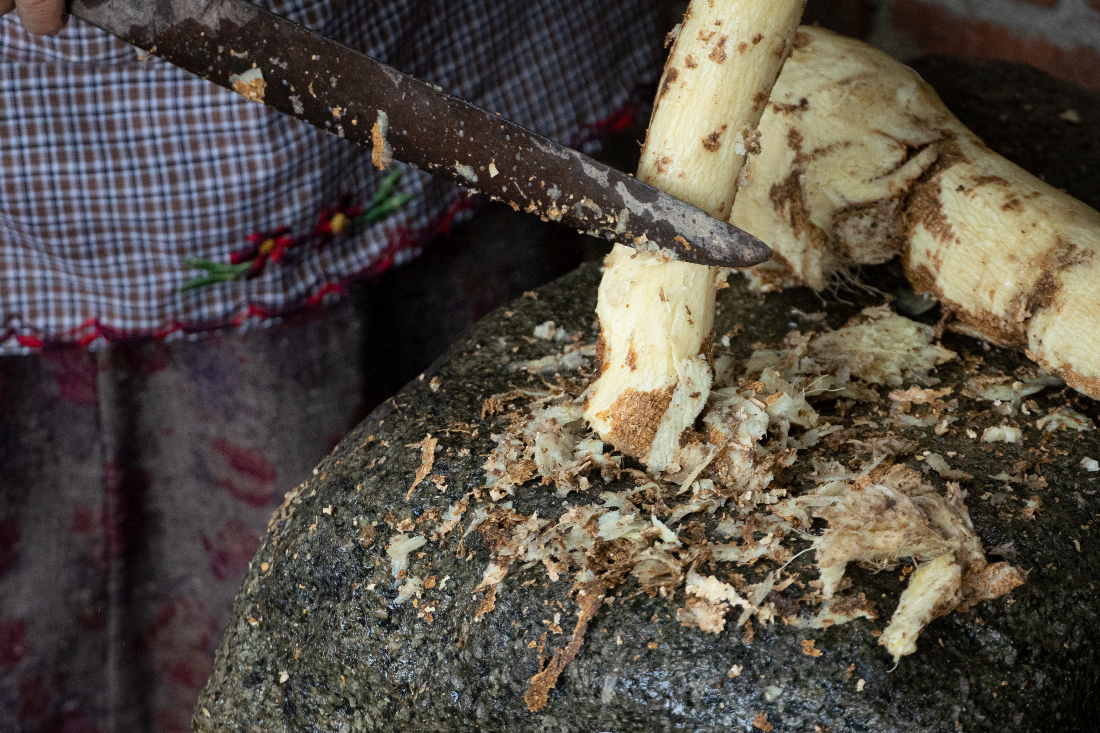
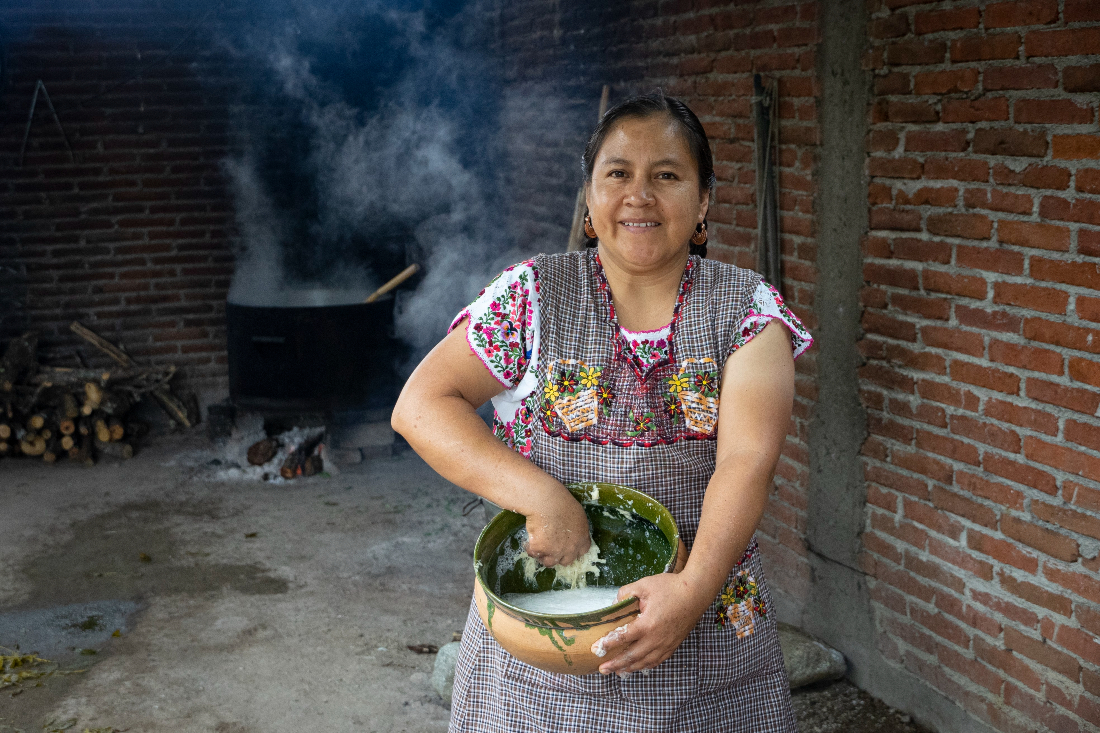
Mixing the Amole soap.
Here is a series of the dying process, first preparing the natural dyes and then the dye baths:
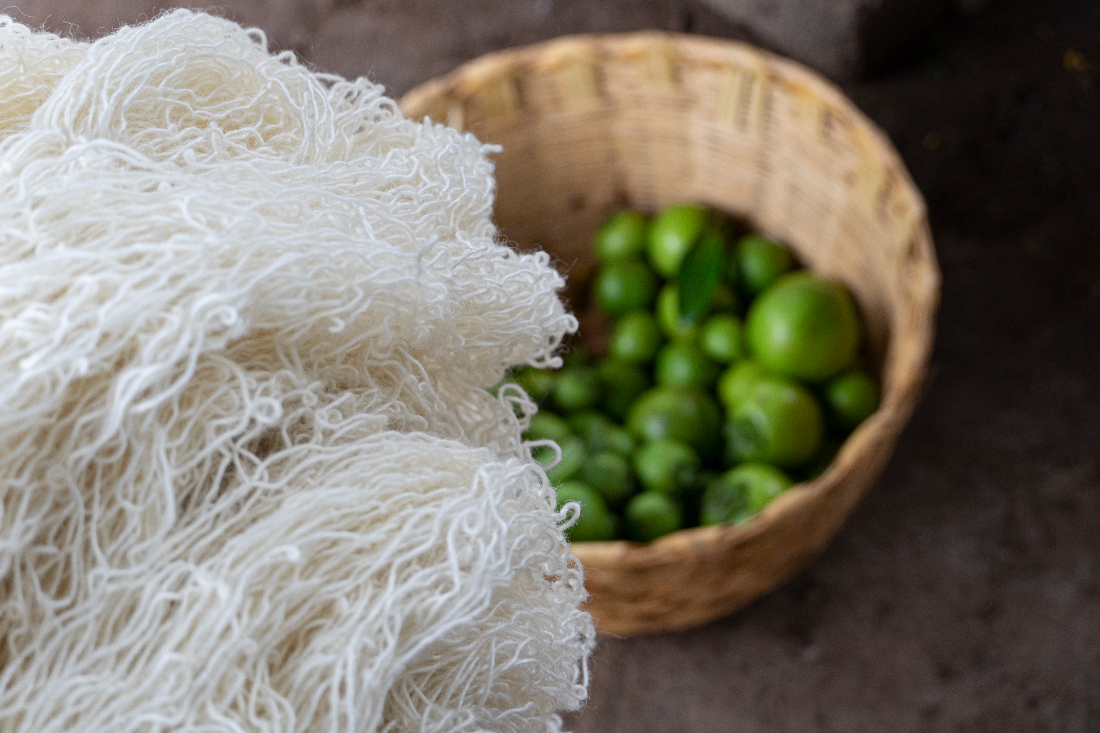
Limes will be used as a mordant (fixative) and then the wool will be dyed.
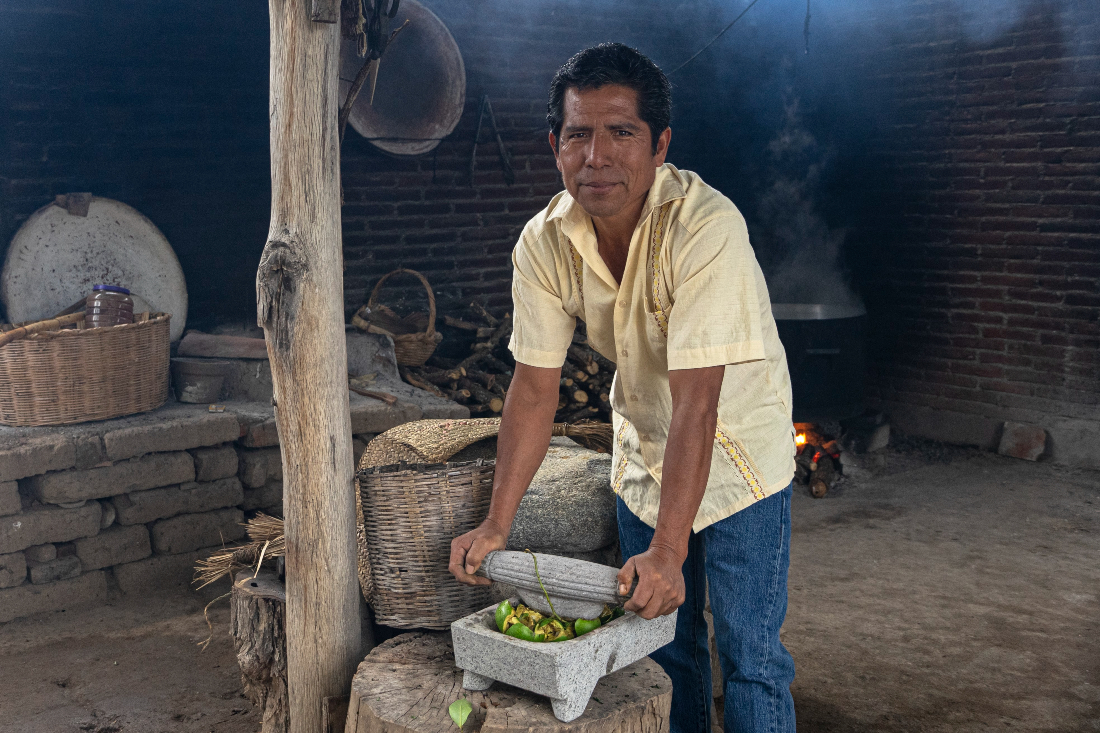
Crushing the Black Sapote

Crushing the cochineal insects on the metate.
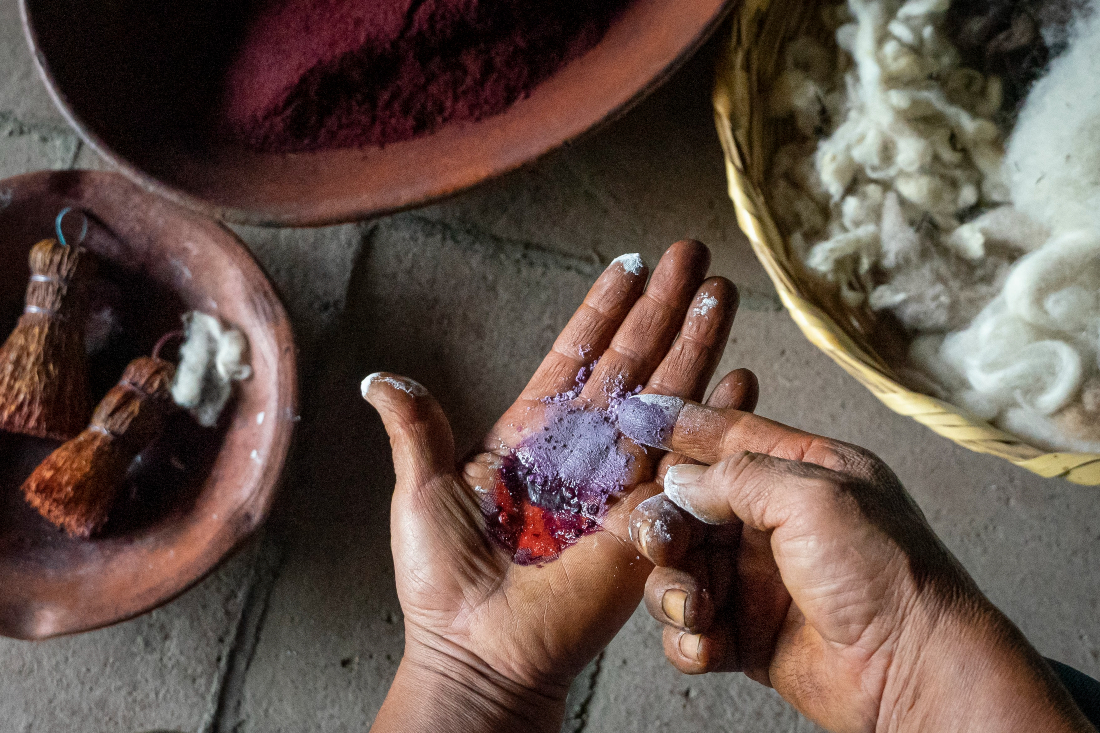
The dried insects make and amazing red color.
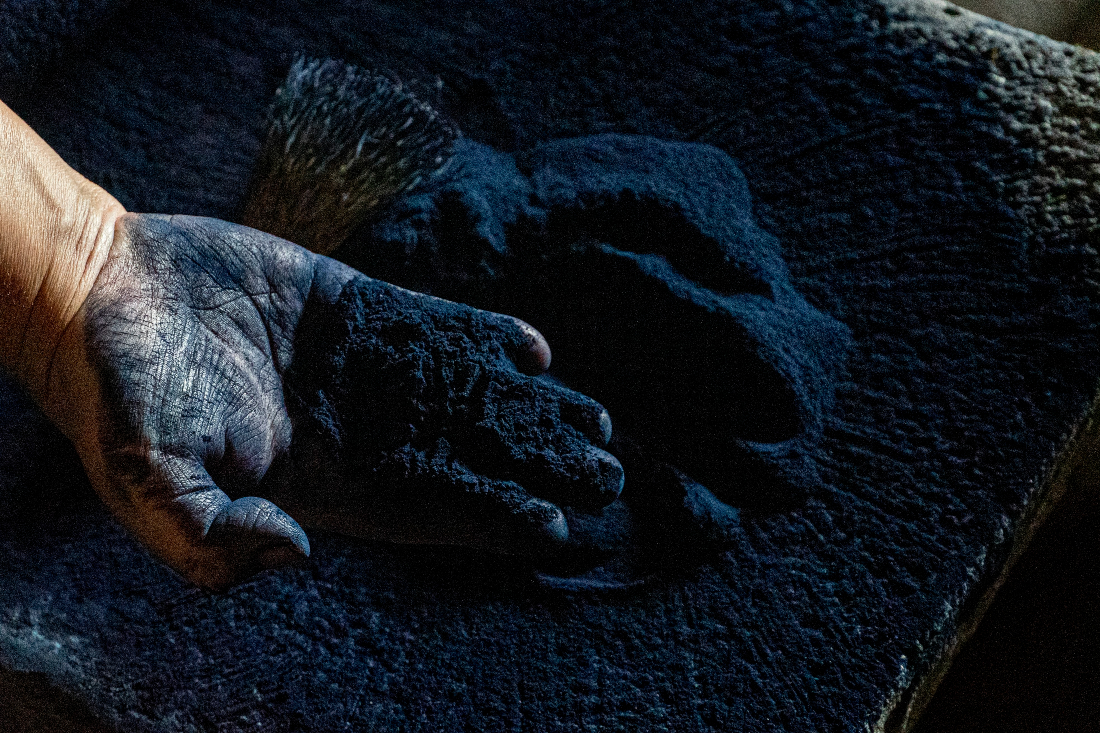
The crushed indigo.
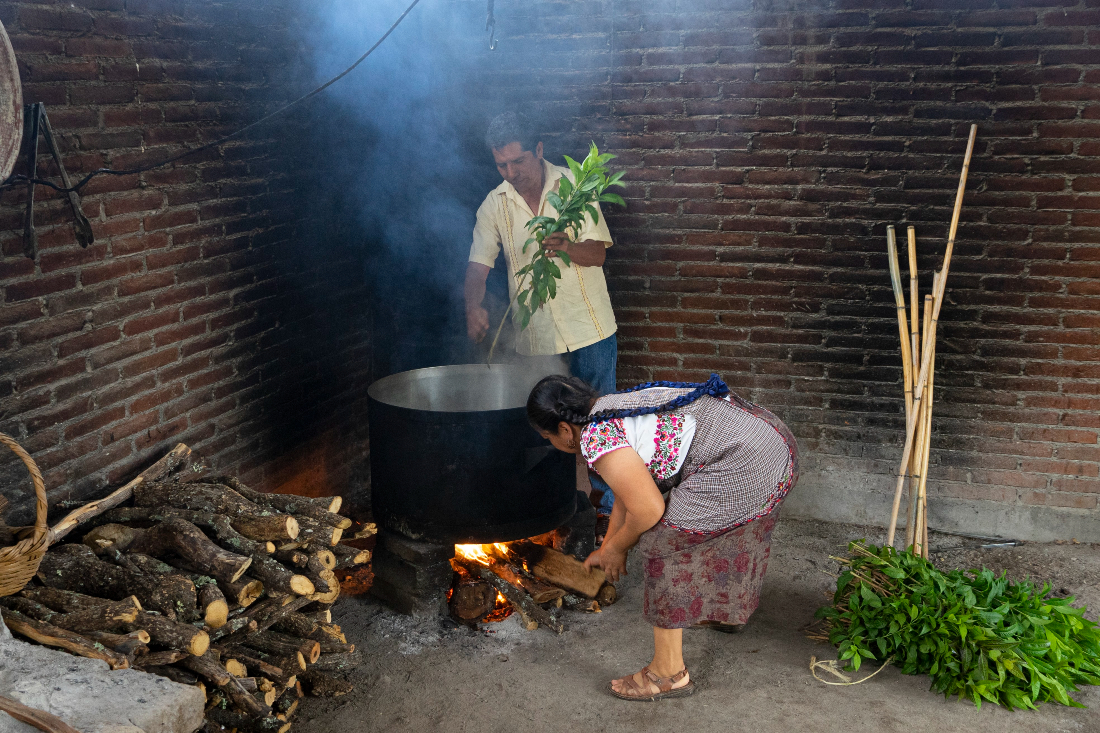
Maroosh, the yellow dye
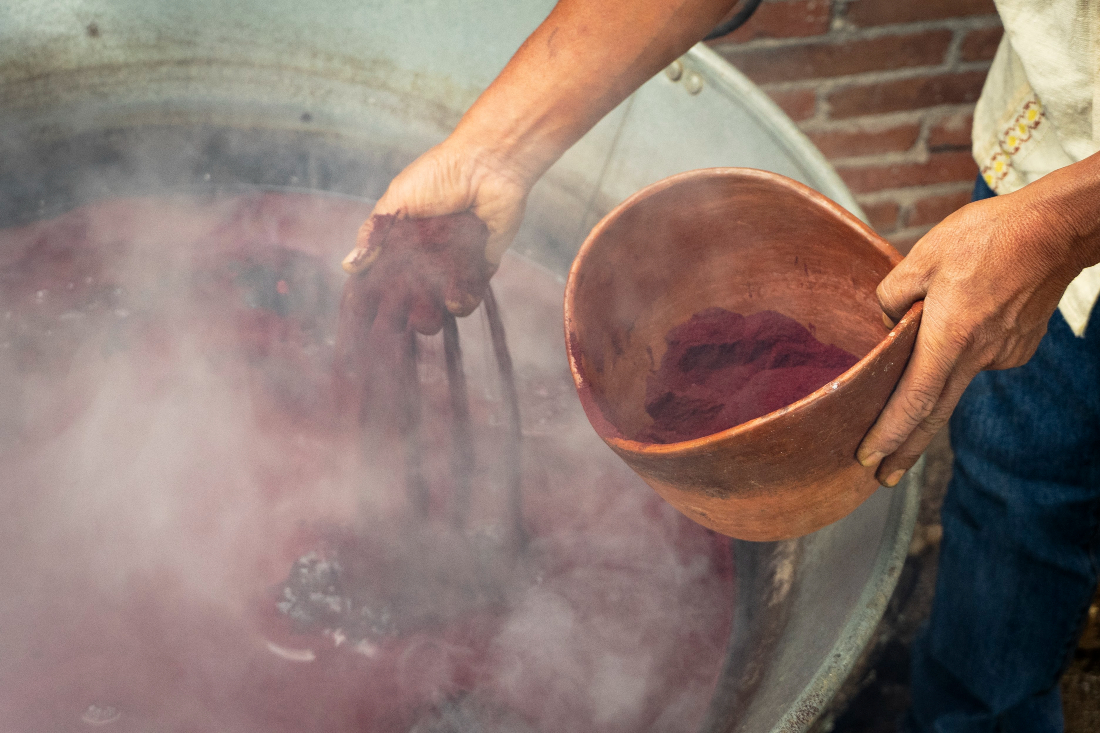
Cochineal added to the dye bath
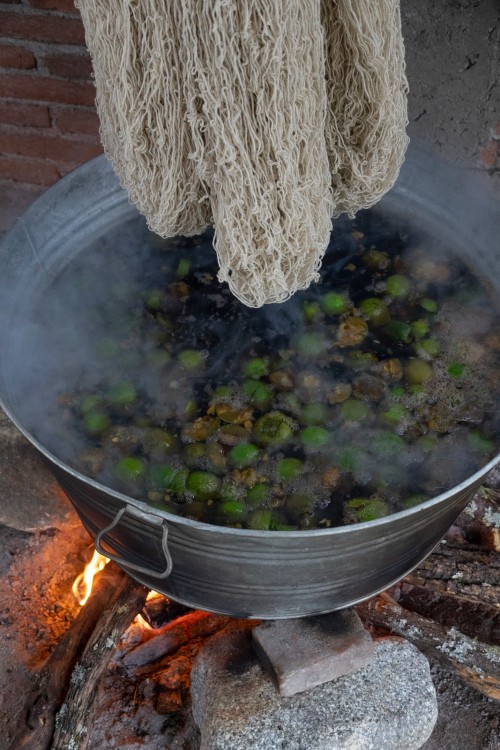
Black Sapote ready for wool.
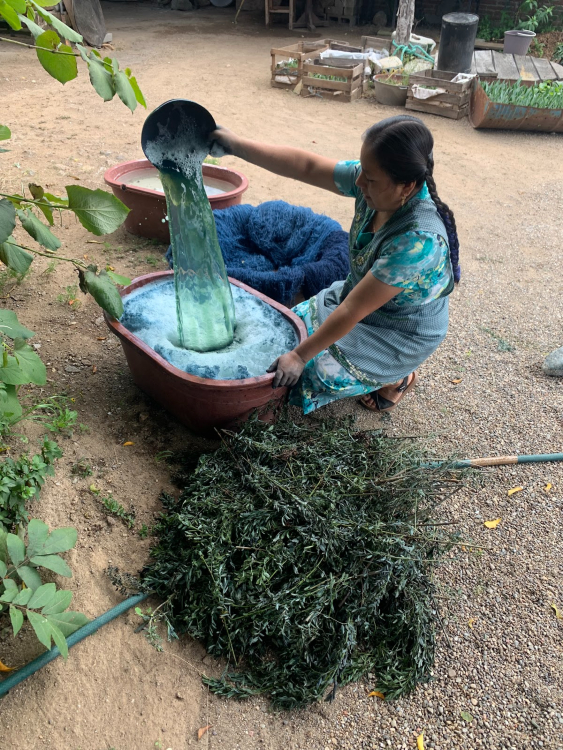
Preparing the indigo, the plant is in the foreground.
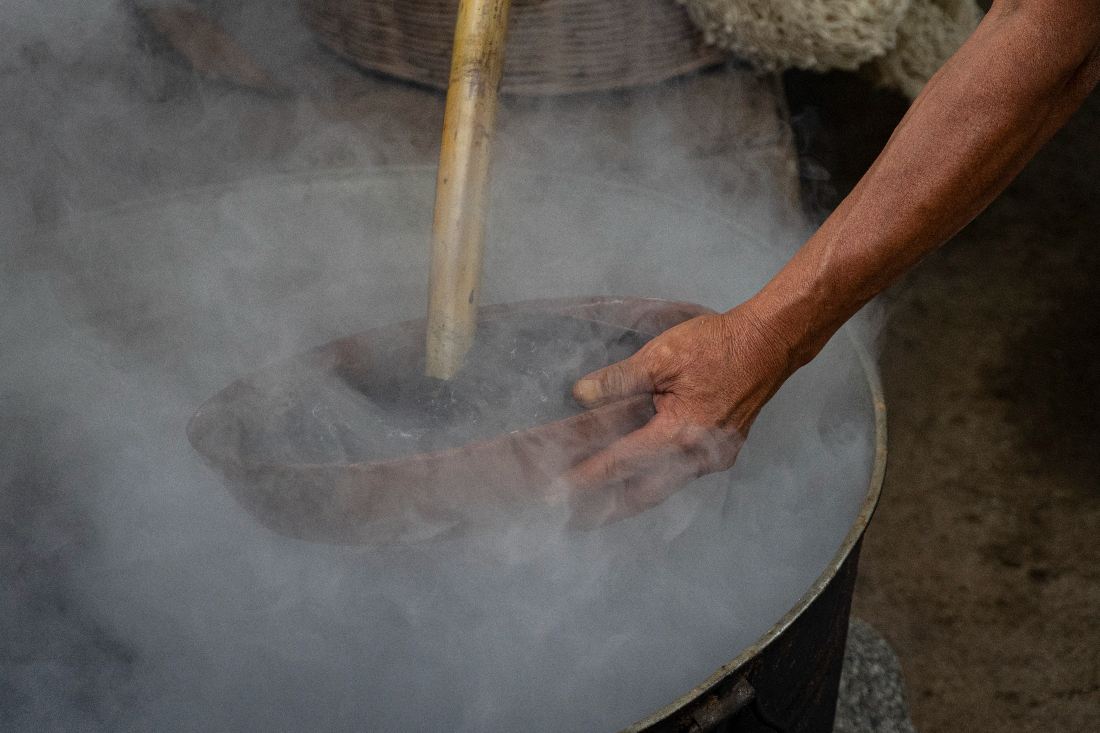
Mixing the bath. Time and temperature contribute to the pure impact of the finished color.
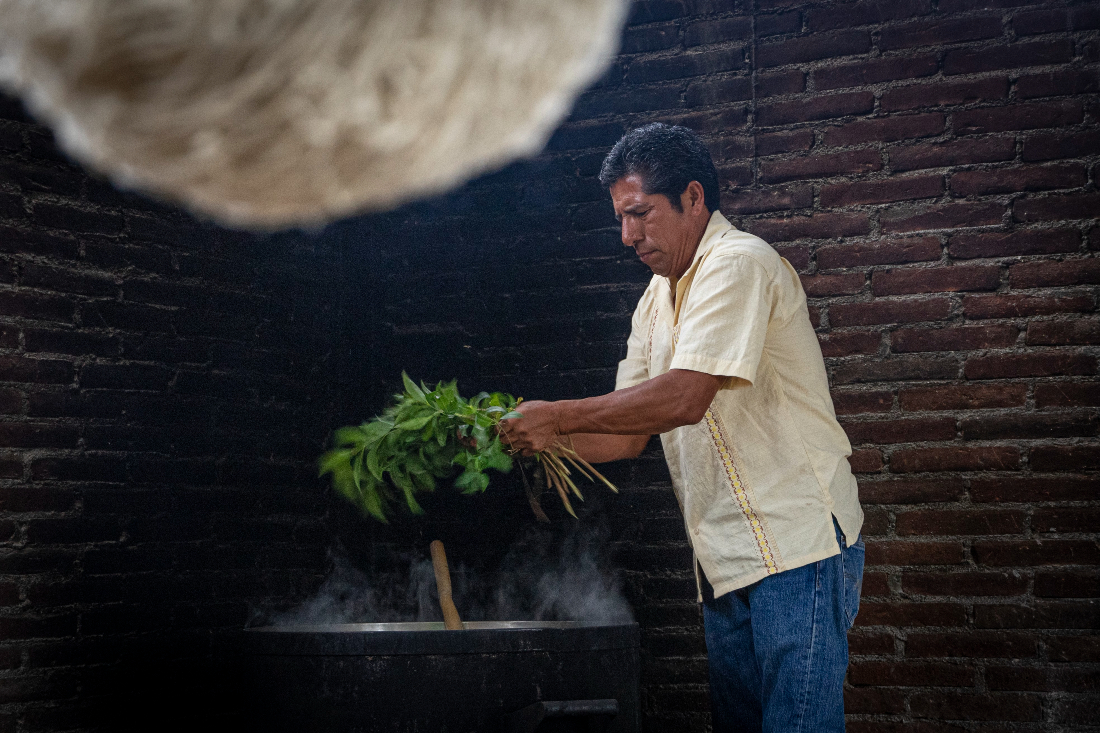
Fresh Maroosh goes in the dye bath.
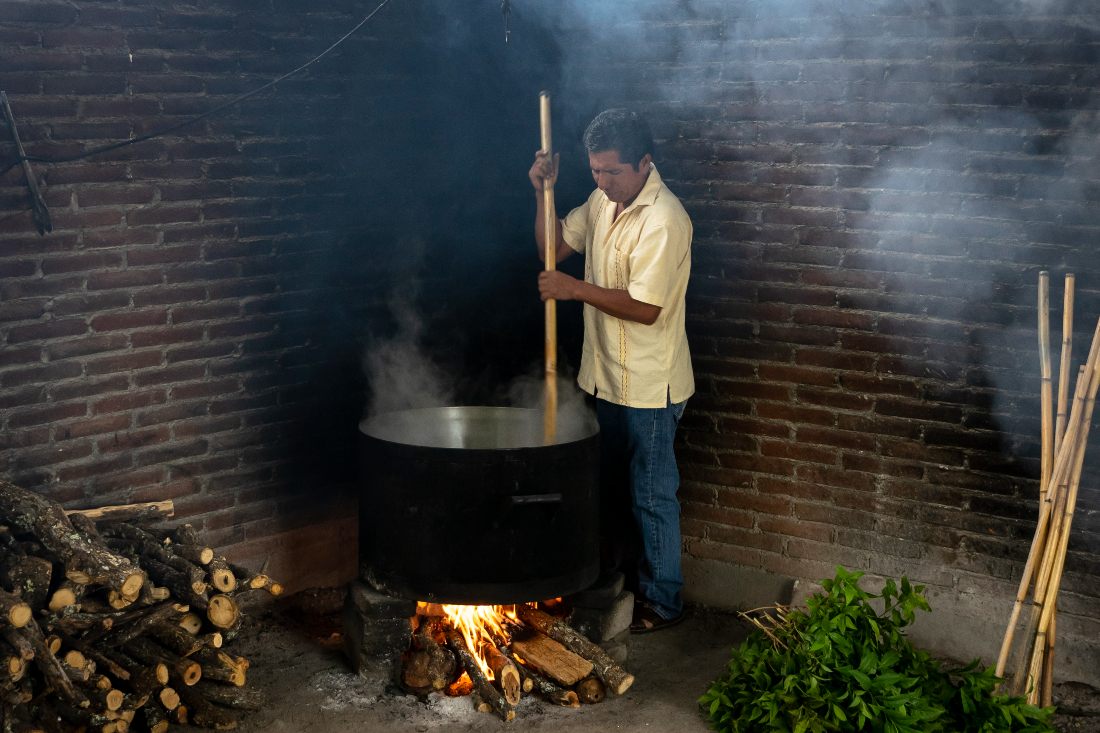
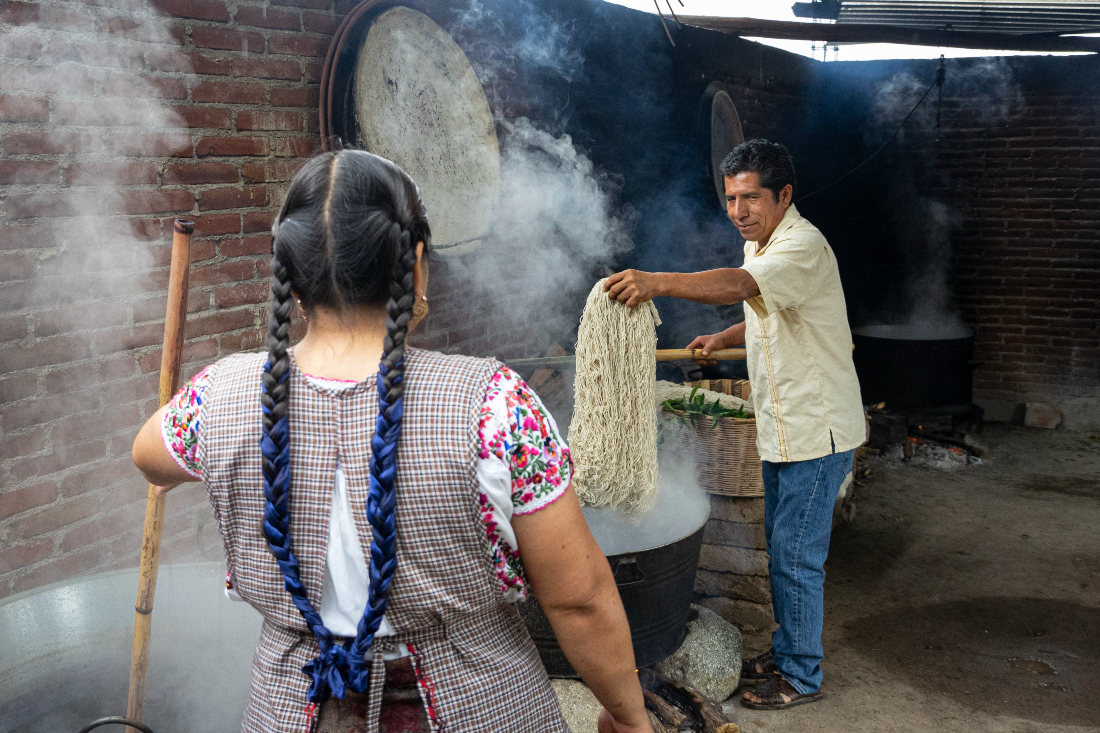
Then the wool comes out of the baths. By re-dying in various dye baths, a wide range of colors are possible.

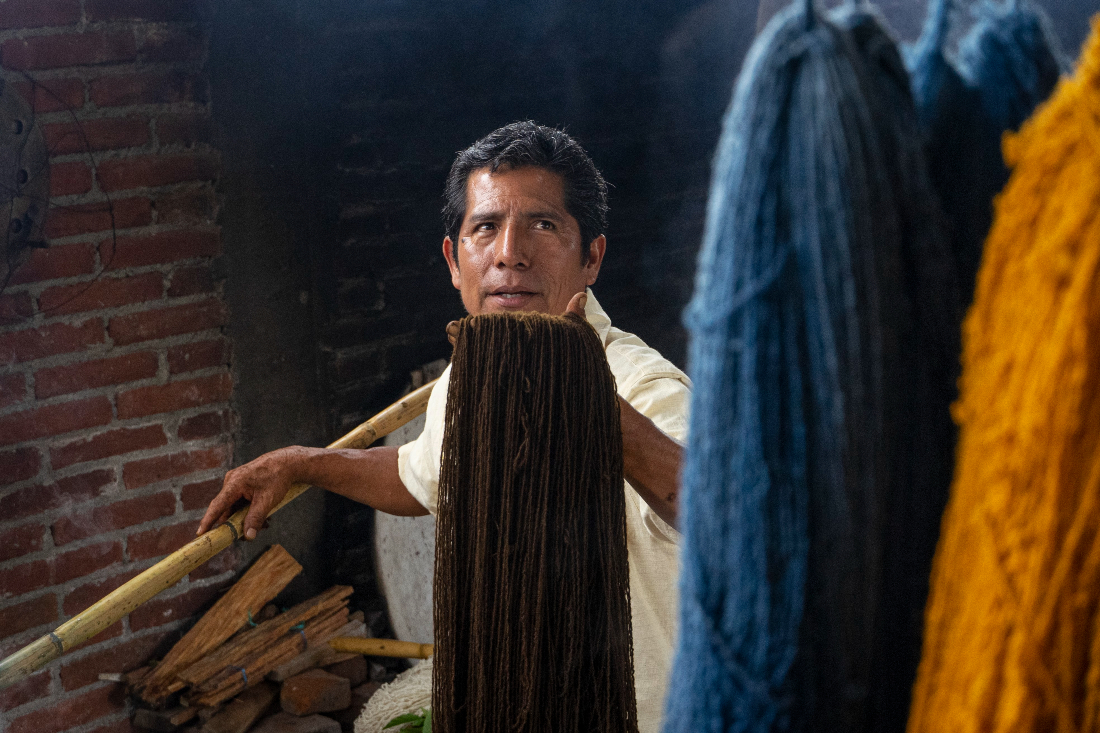
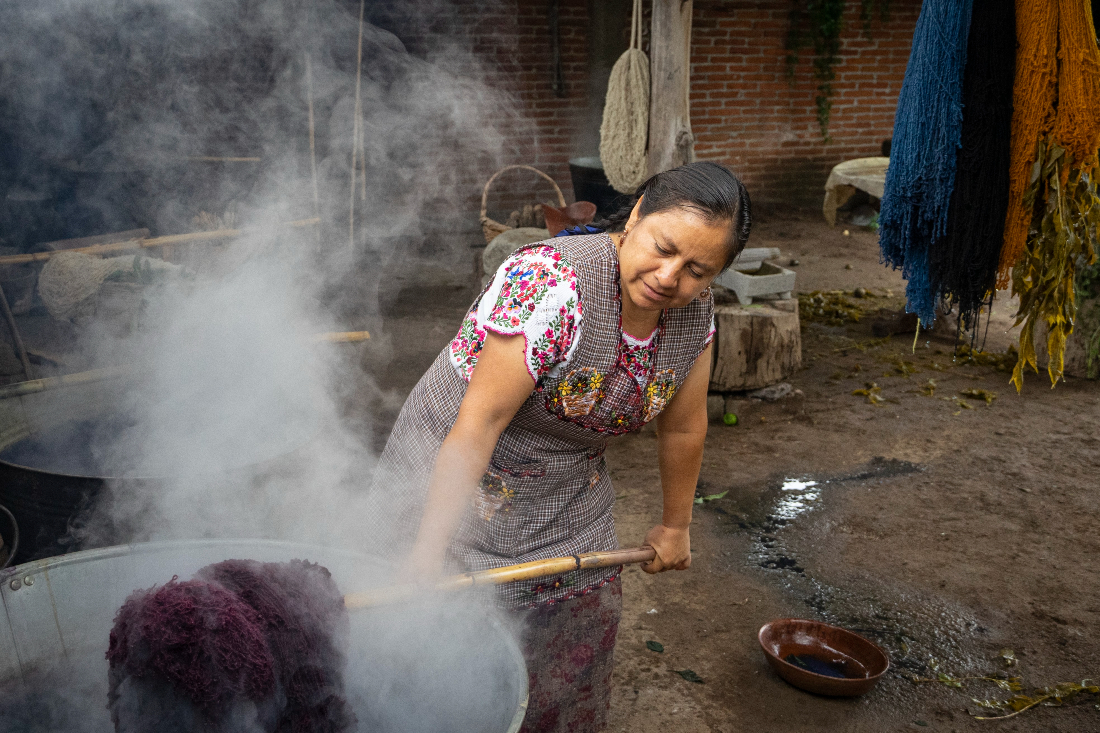
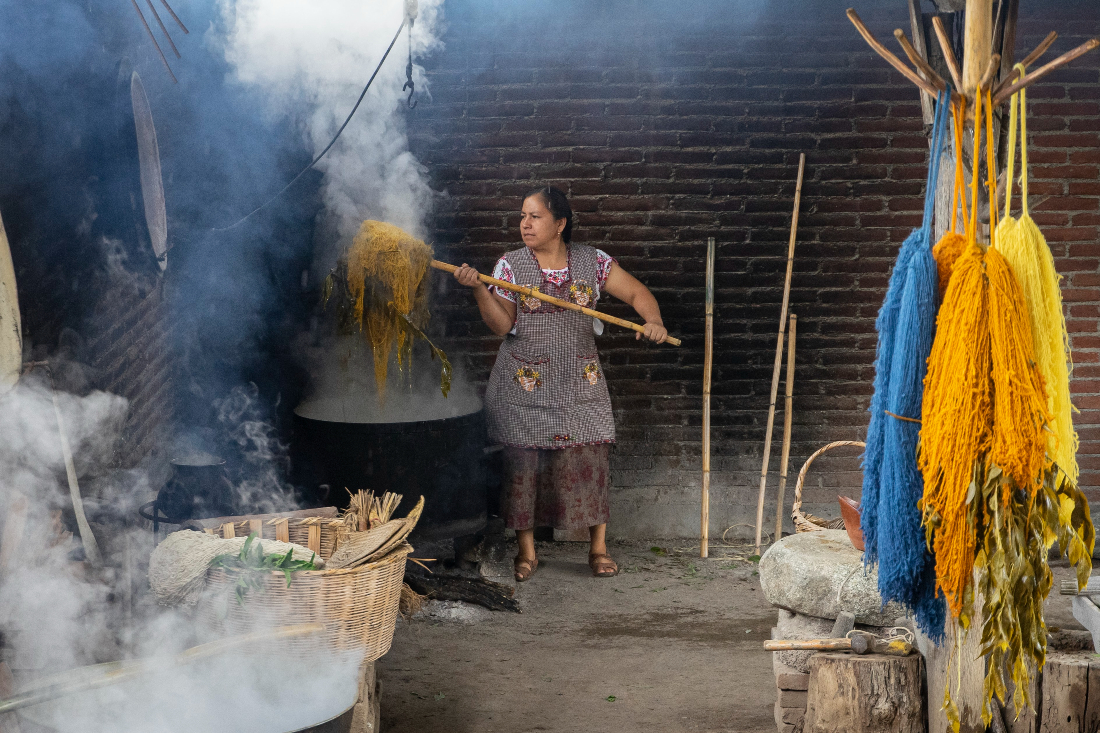
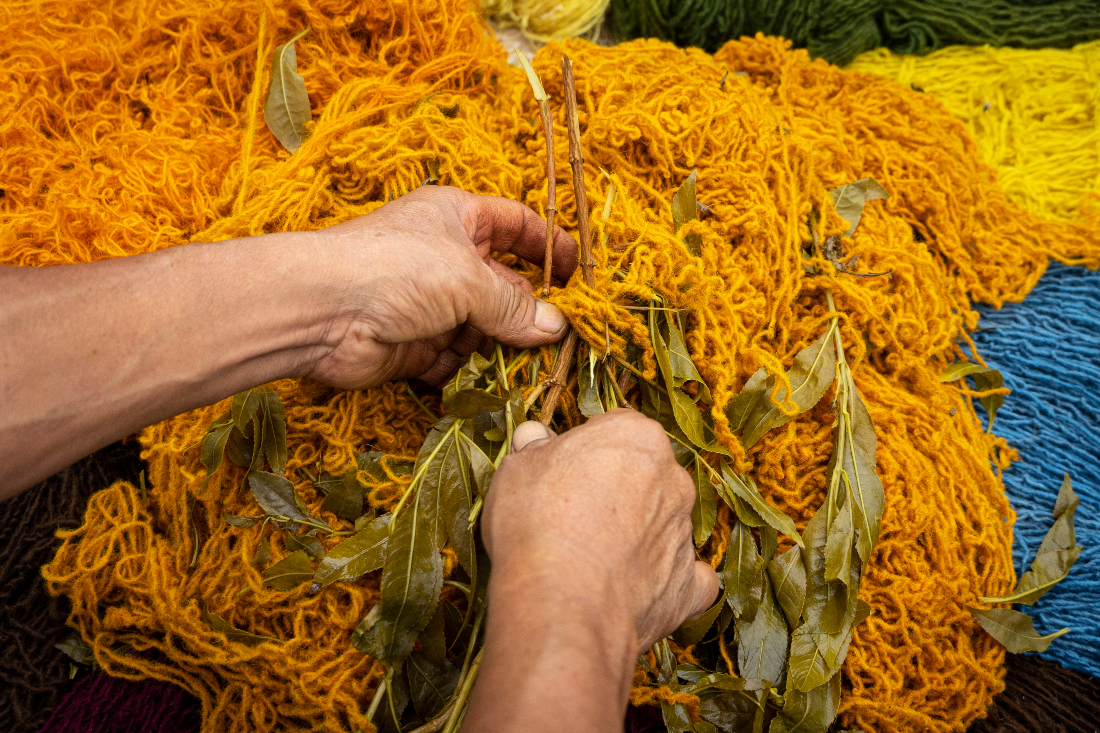
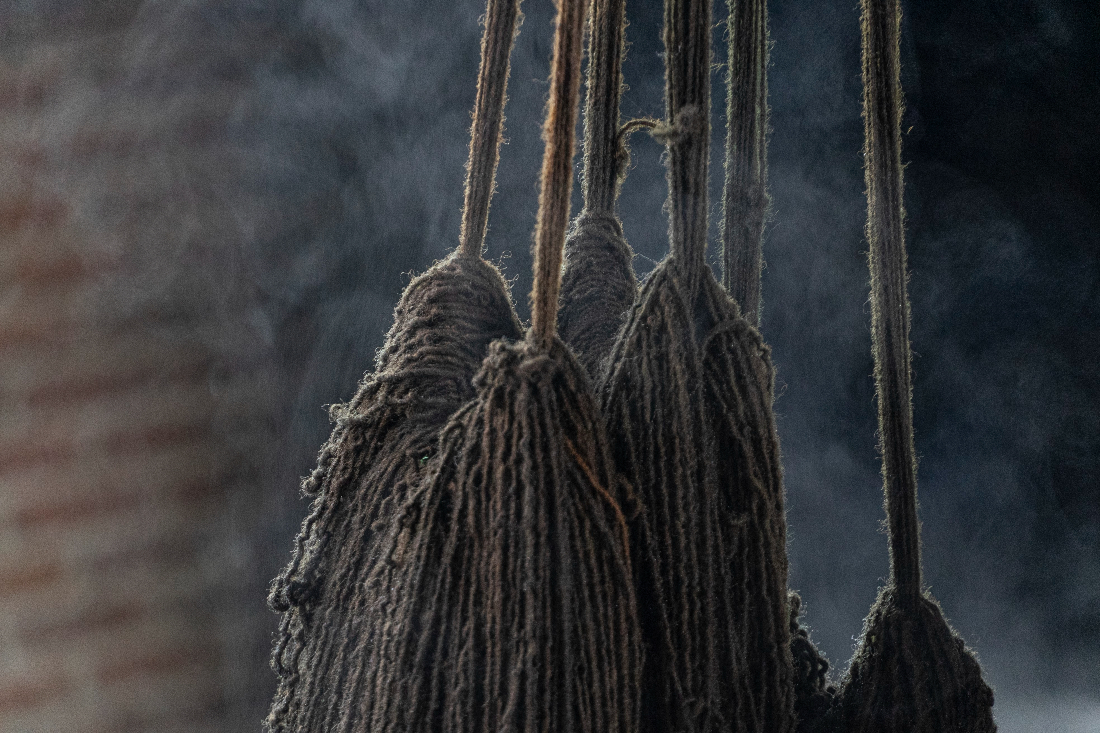
The dye needs oxygen to become its true color.
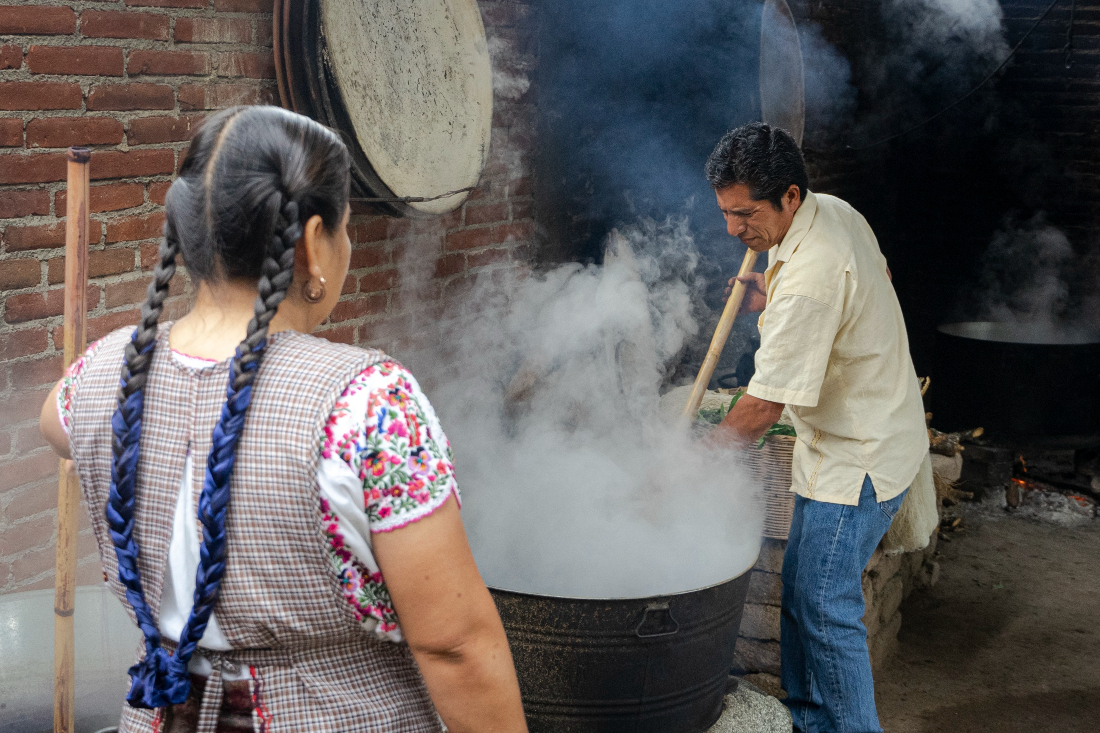
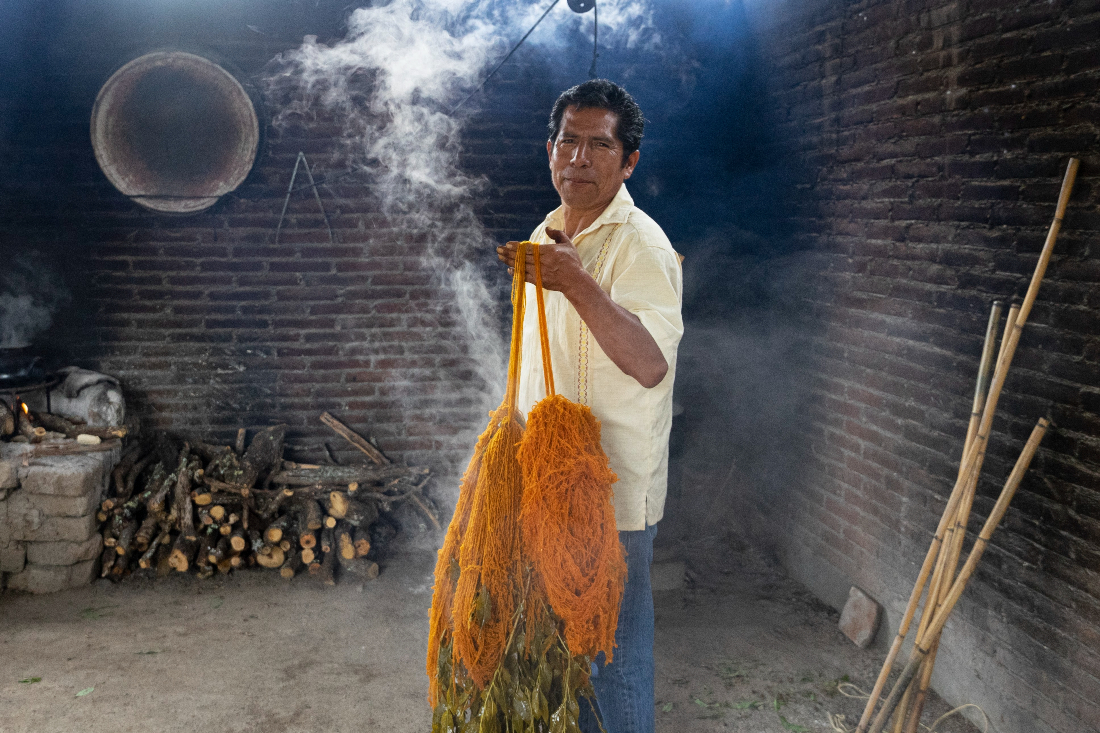
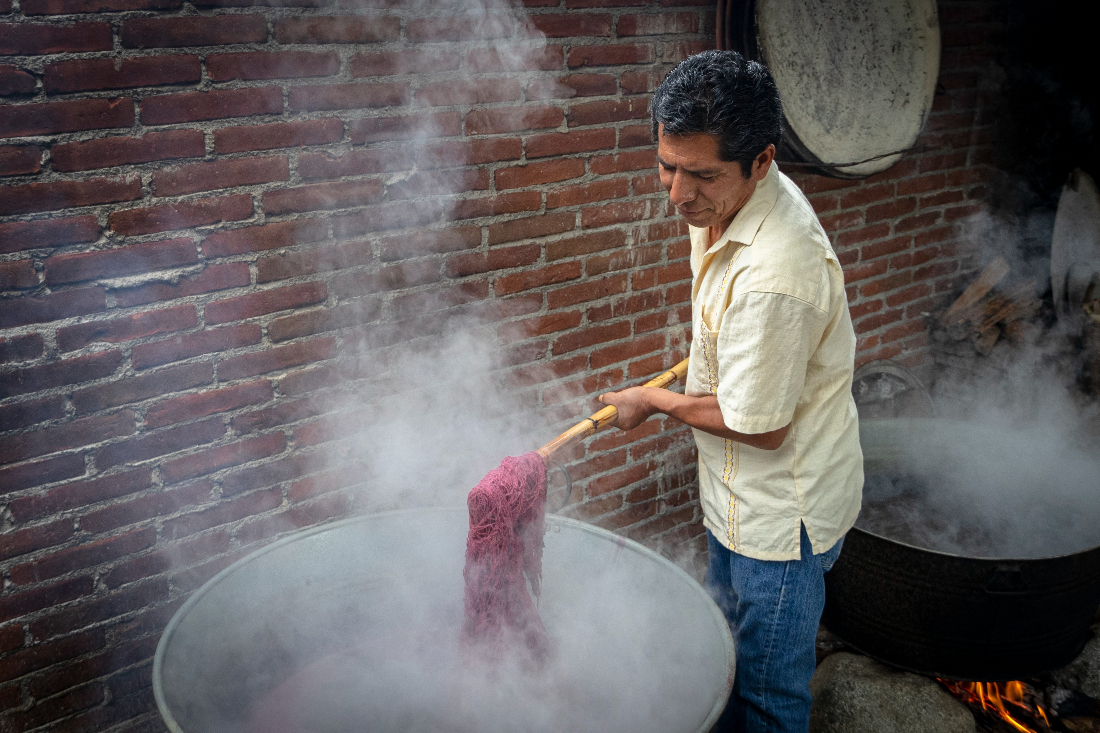
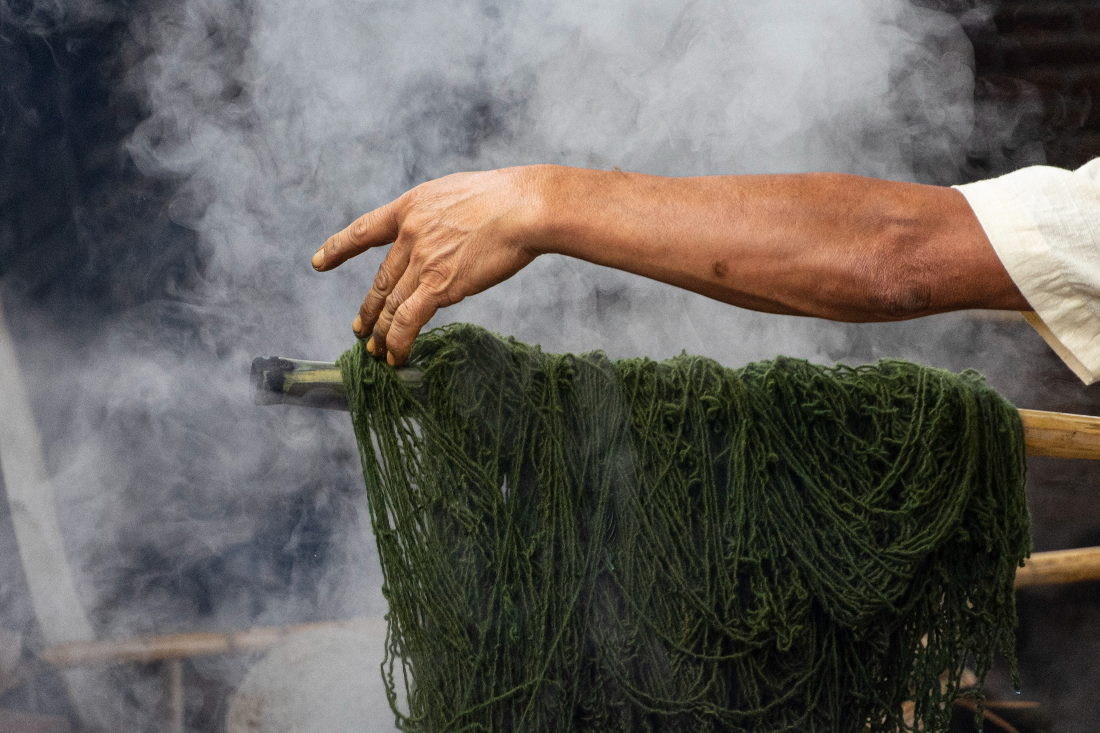
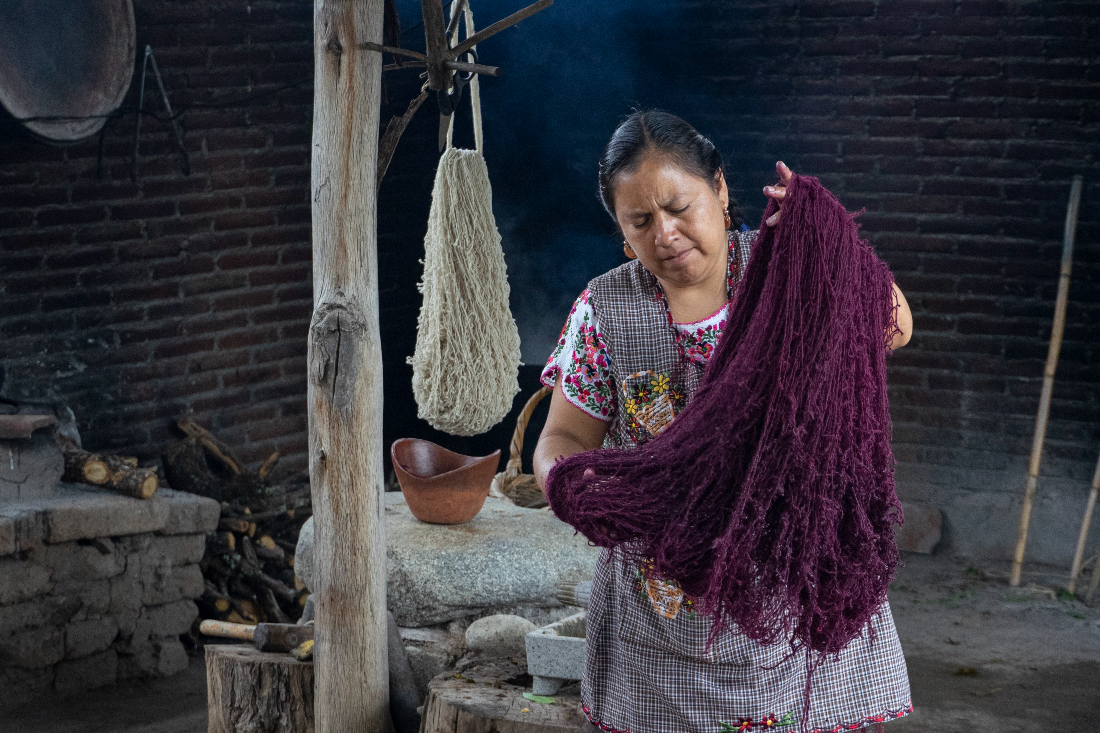
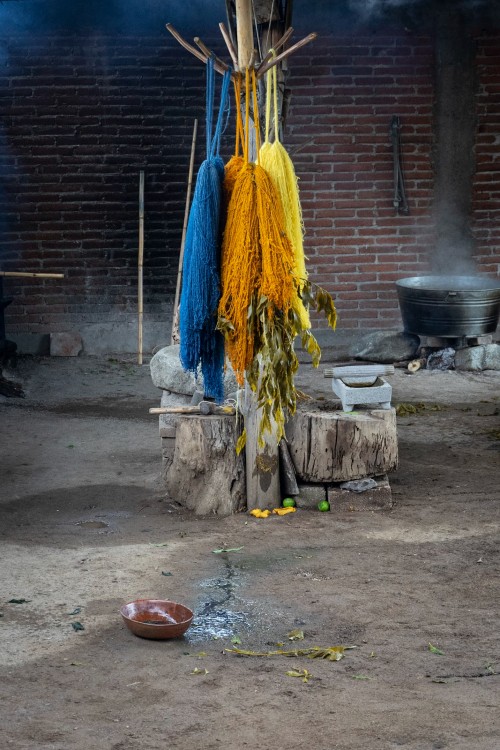
Once the wool has been dyed and redyed the skeins are hung to dry and reach the full potential of the color.
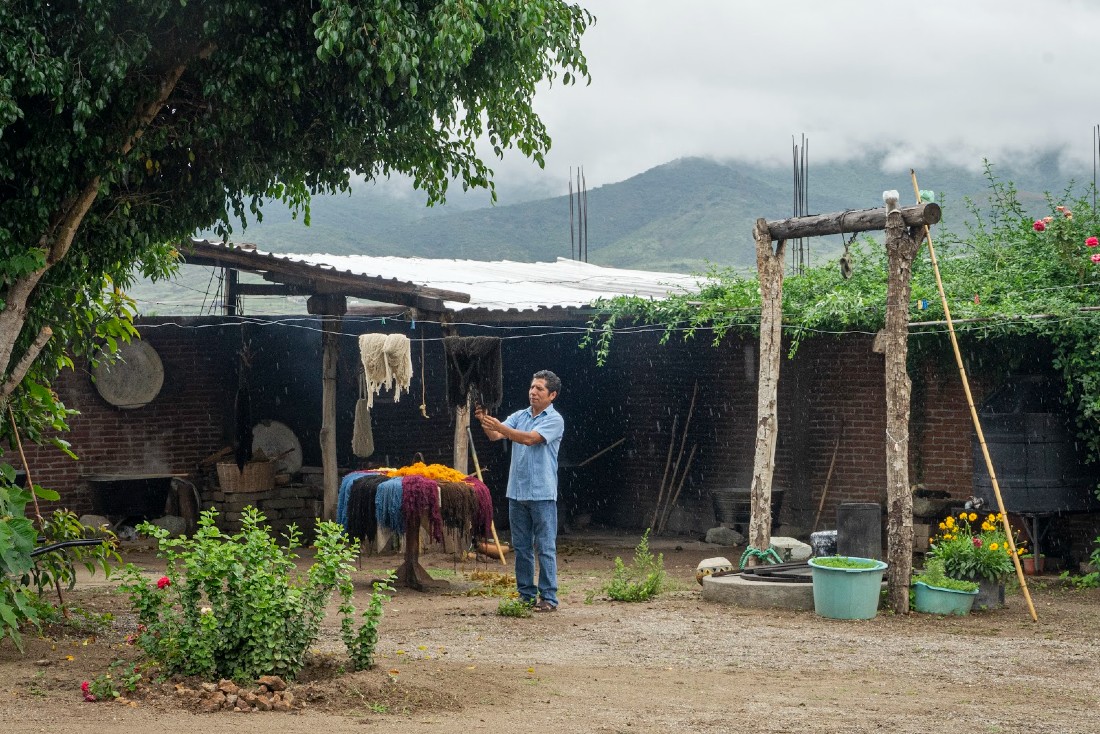
Now the weaving can begin.
Preparing the loom.
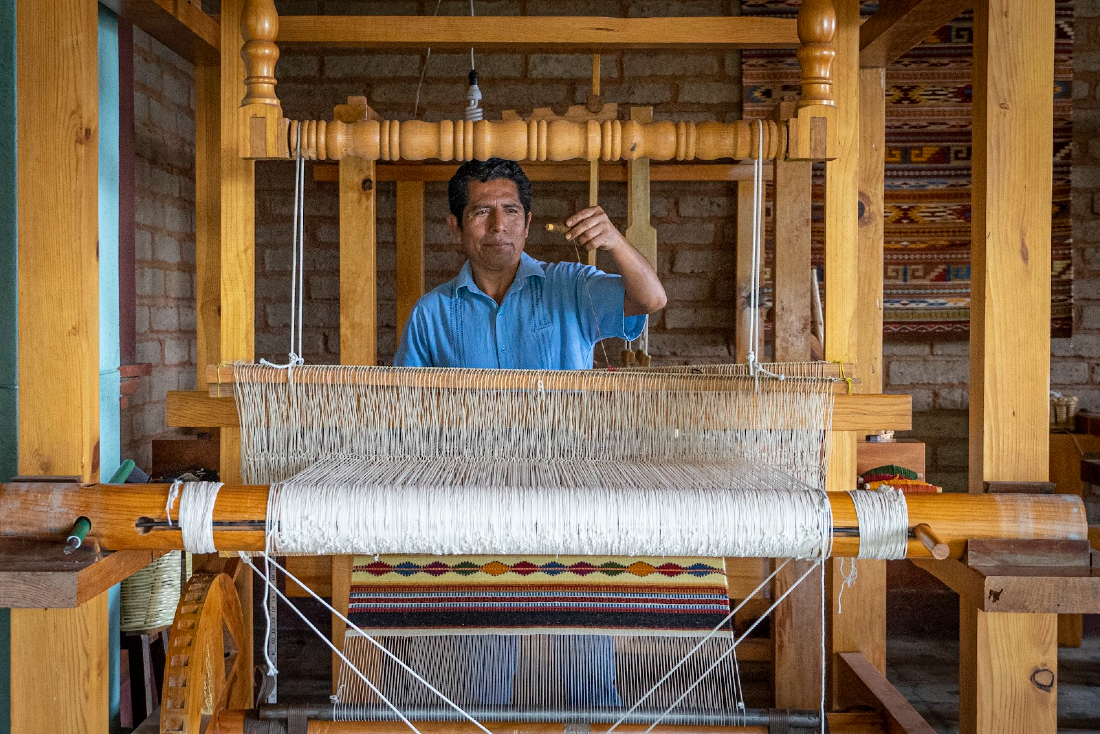
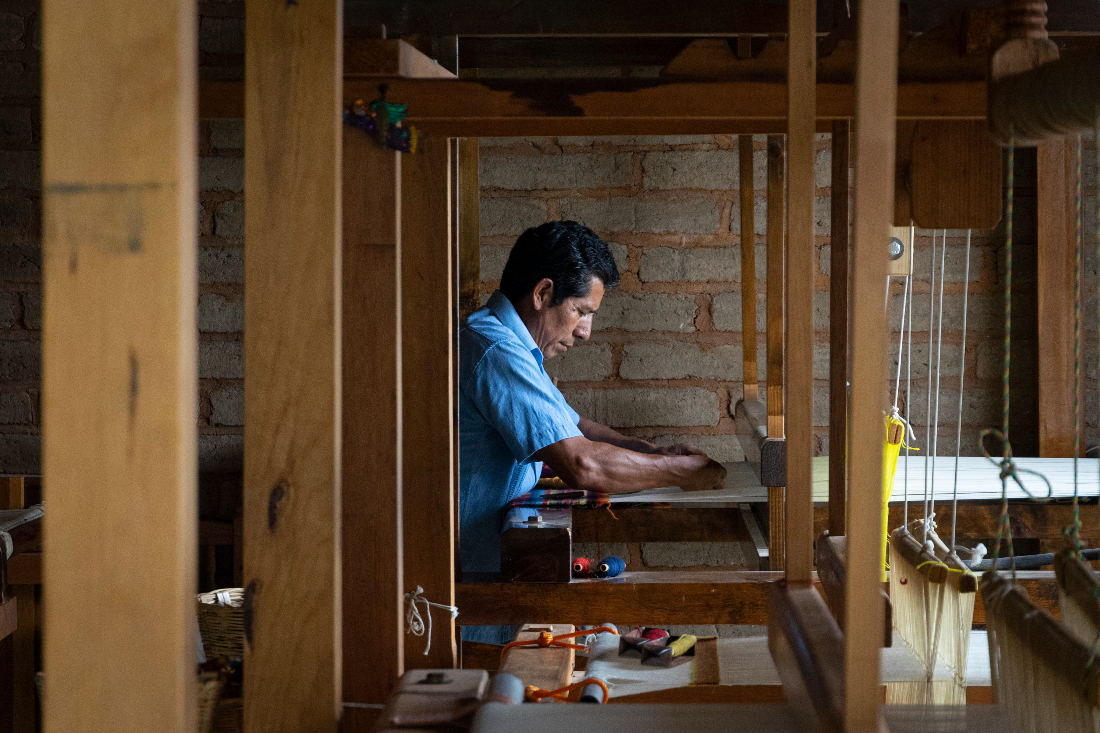
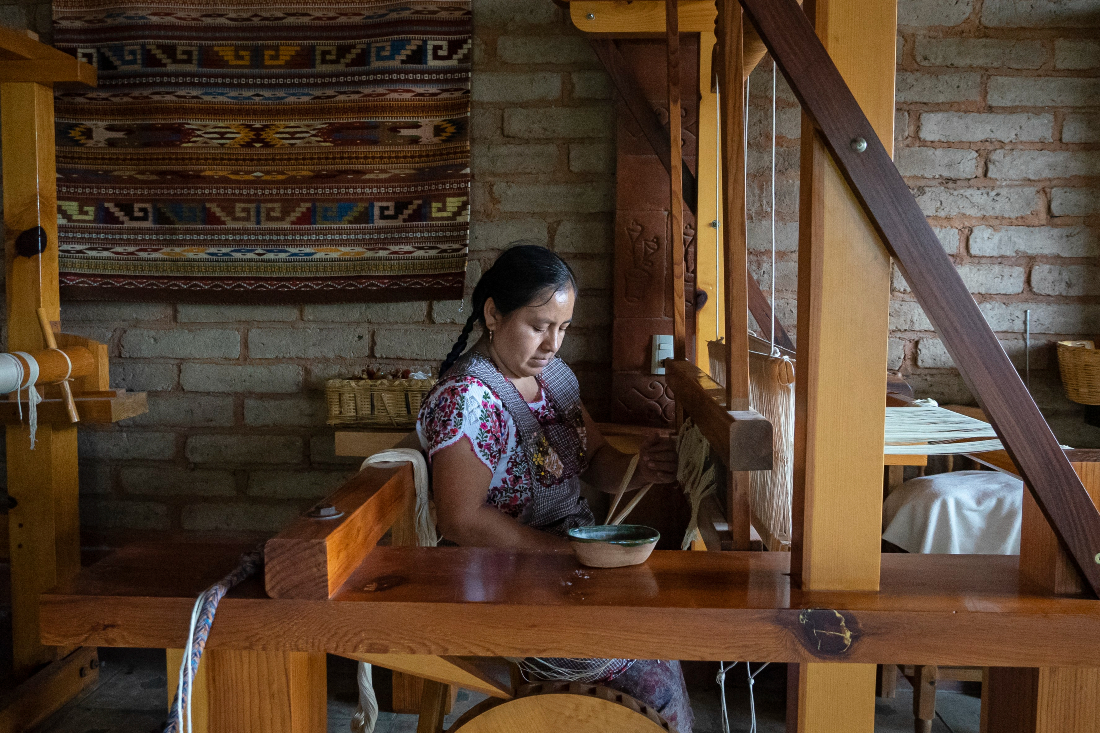
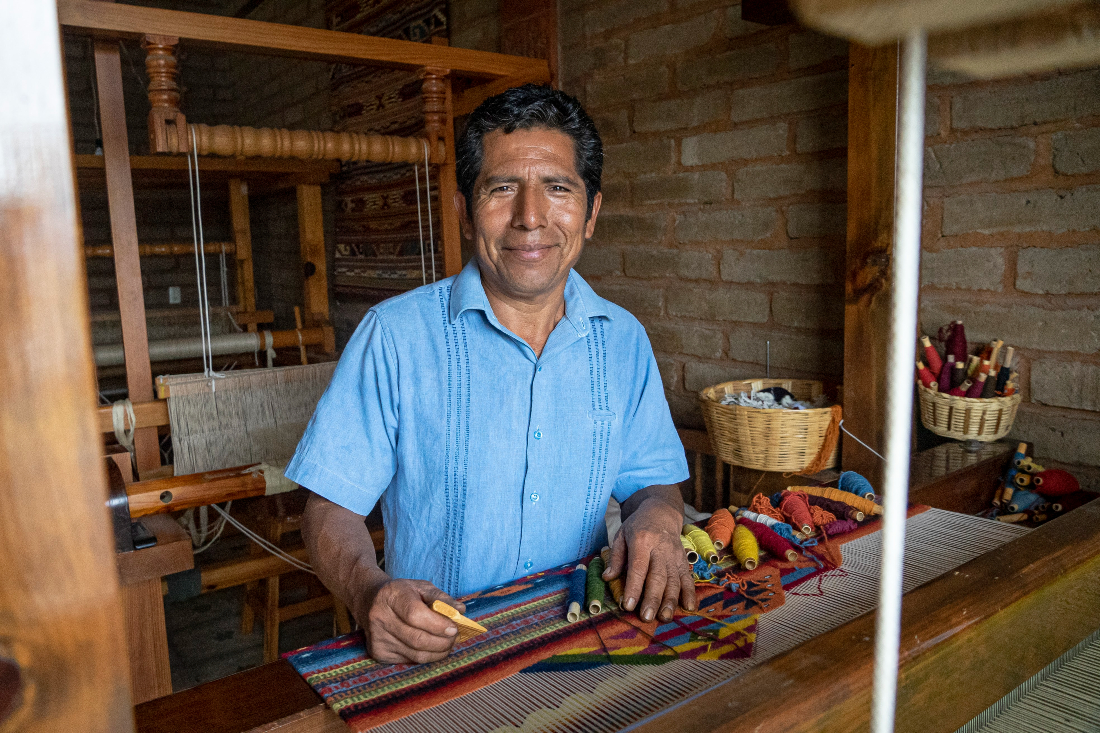
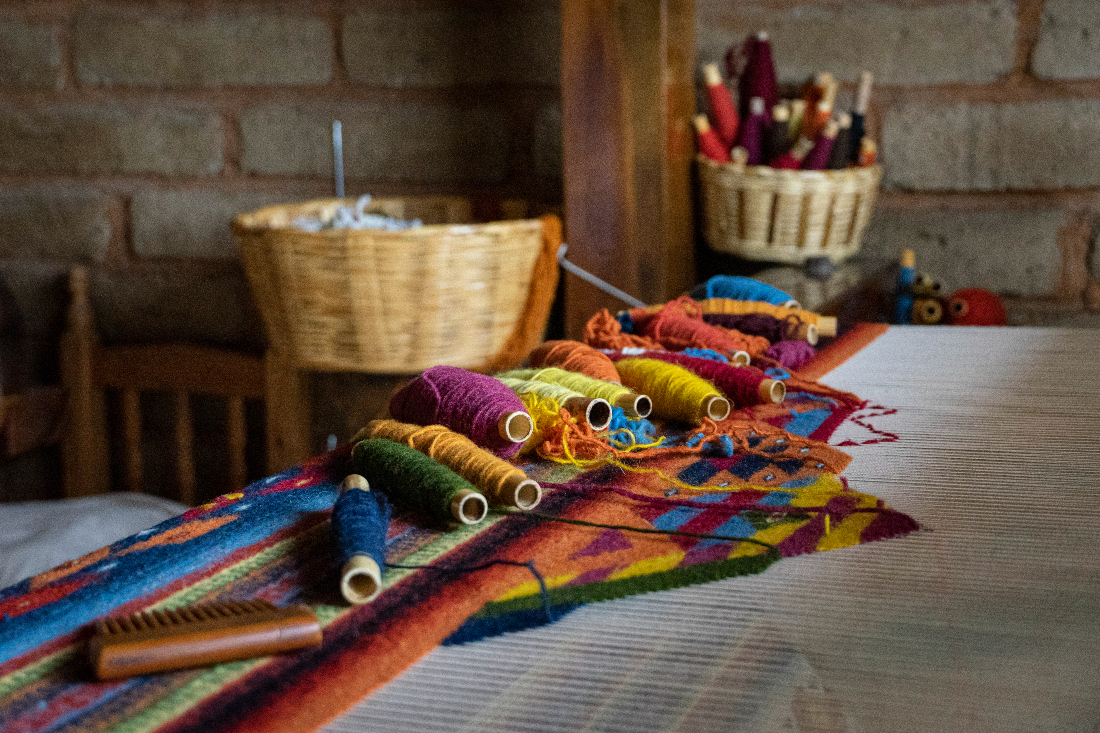
And after all of this careful work, there are beautiful pieces to be had.
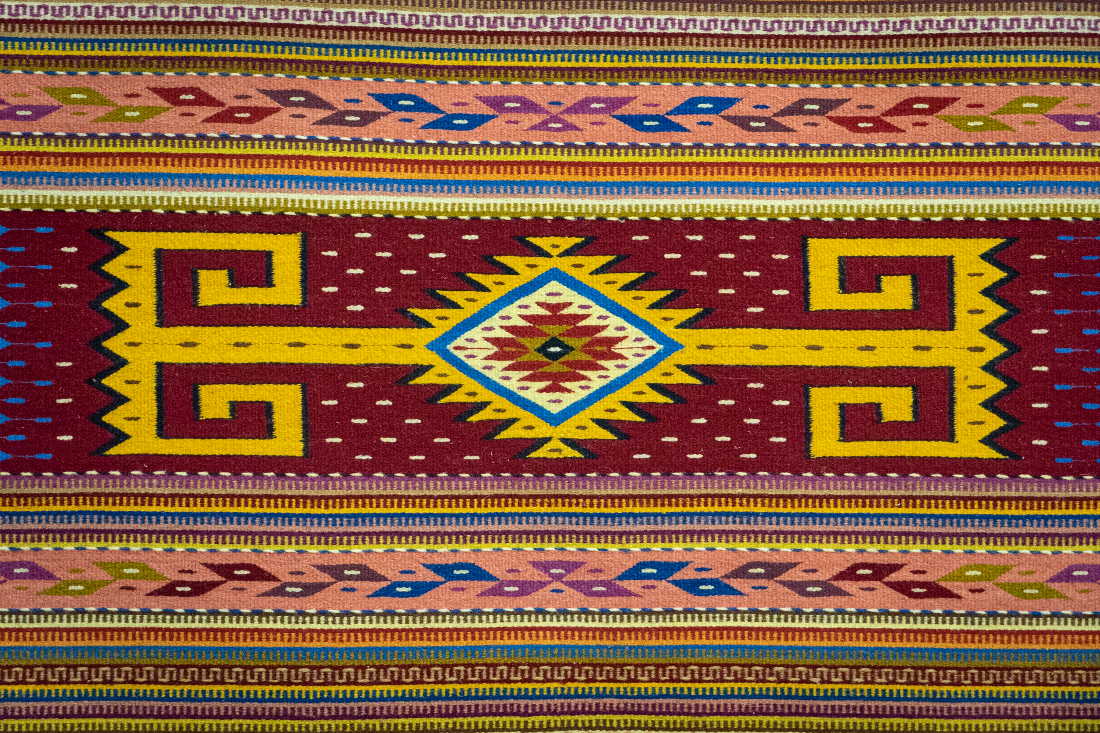
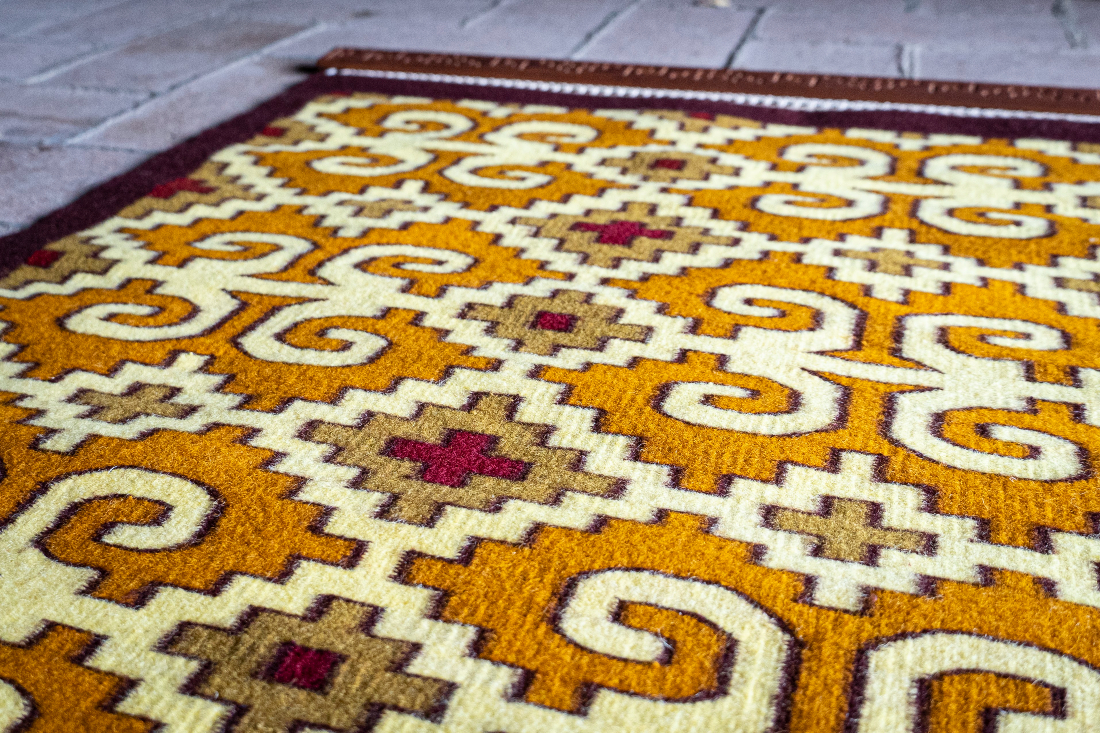
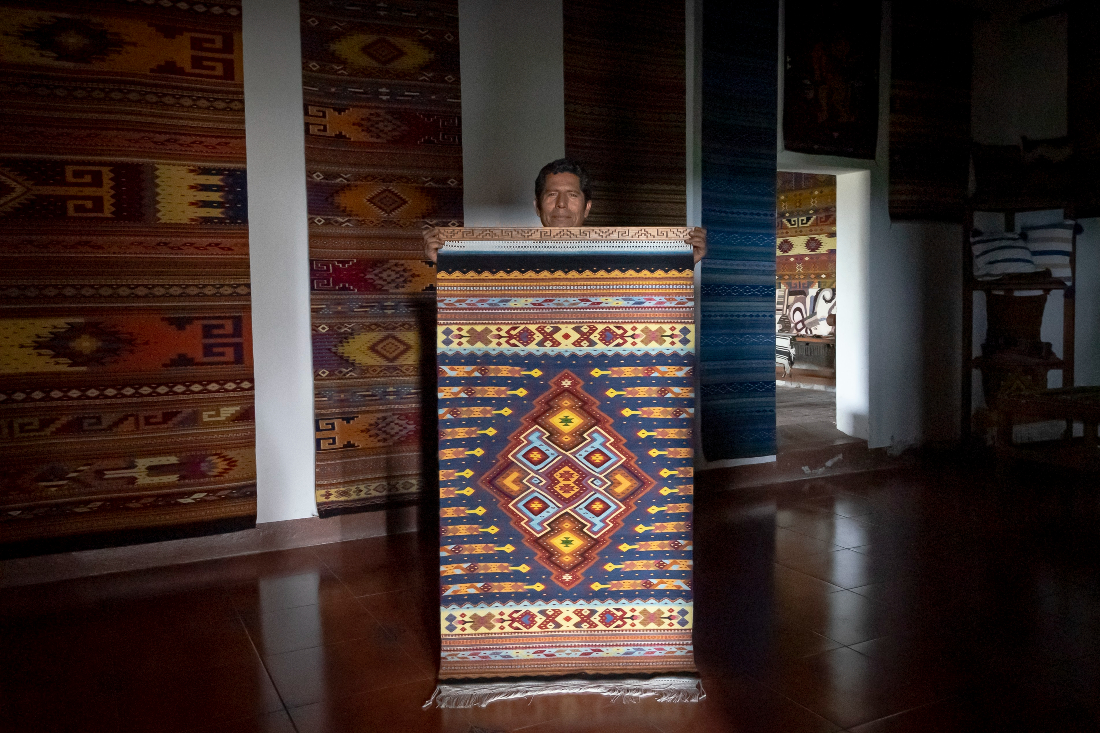
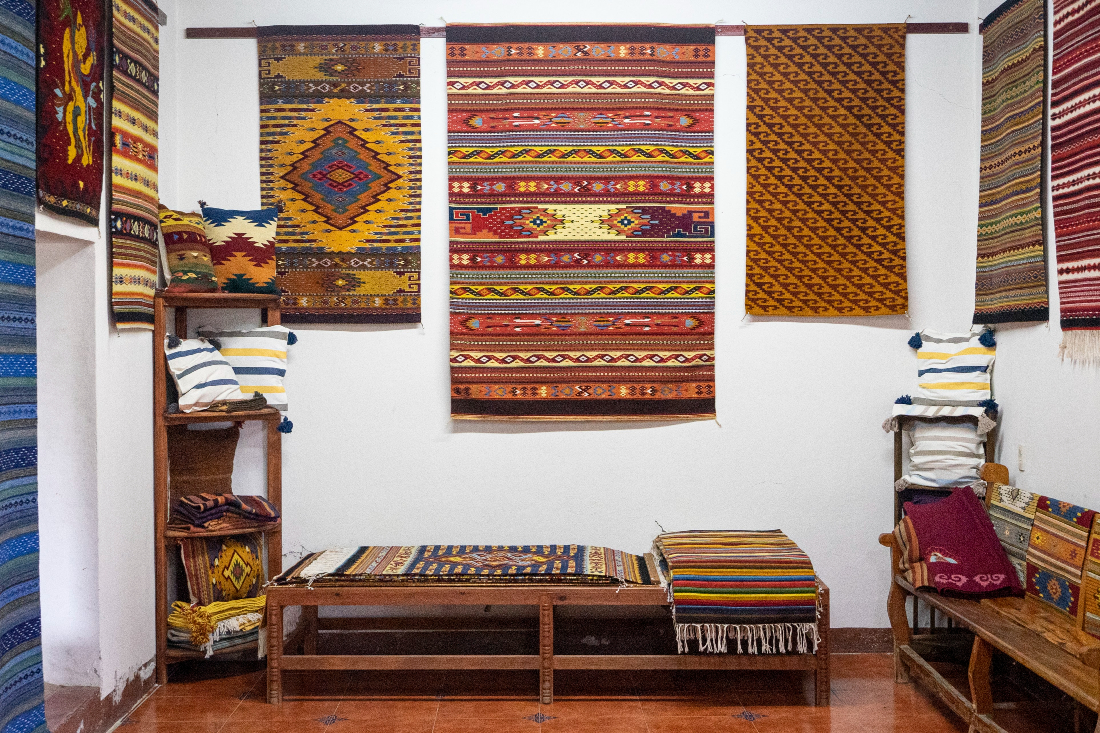
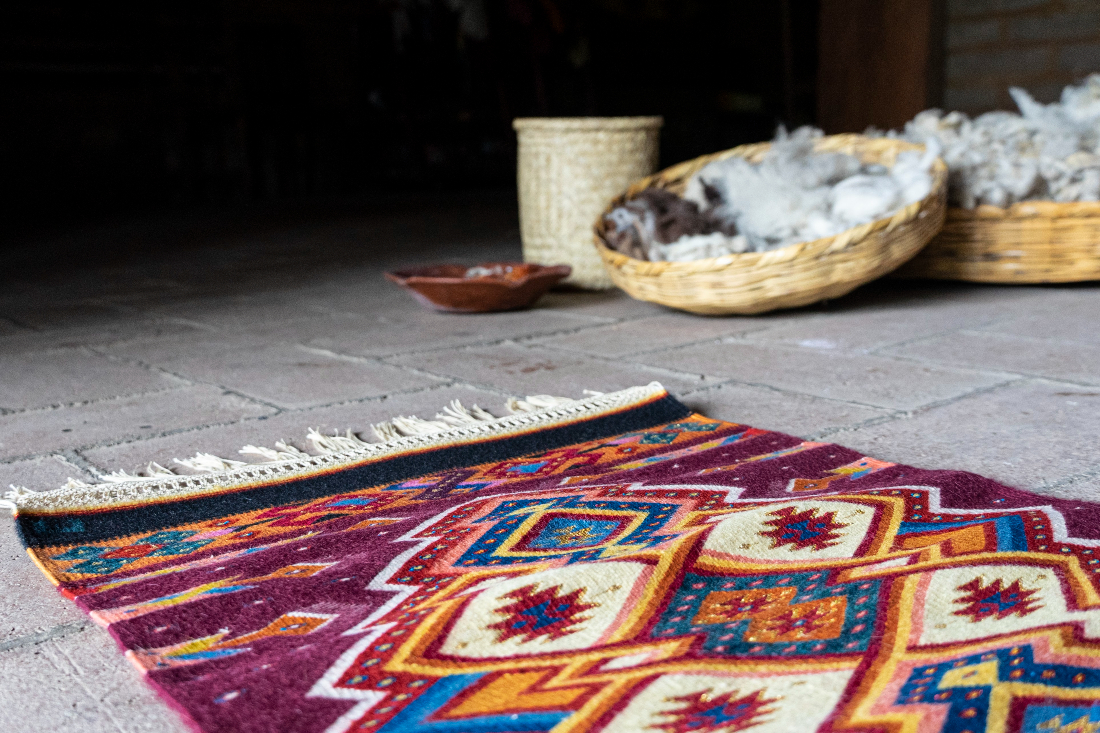
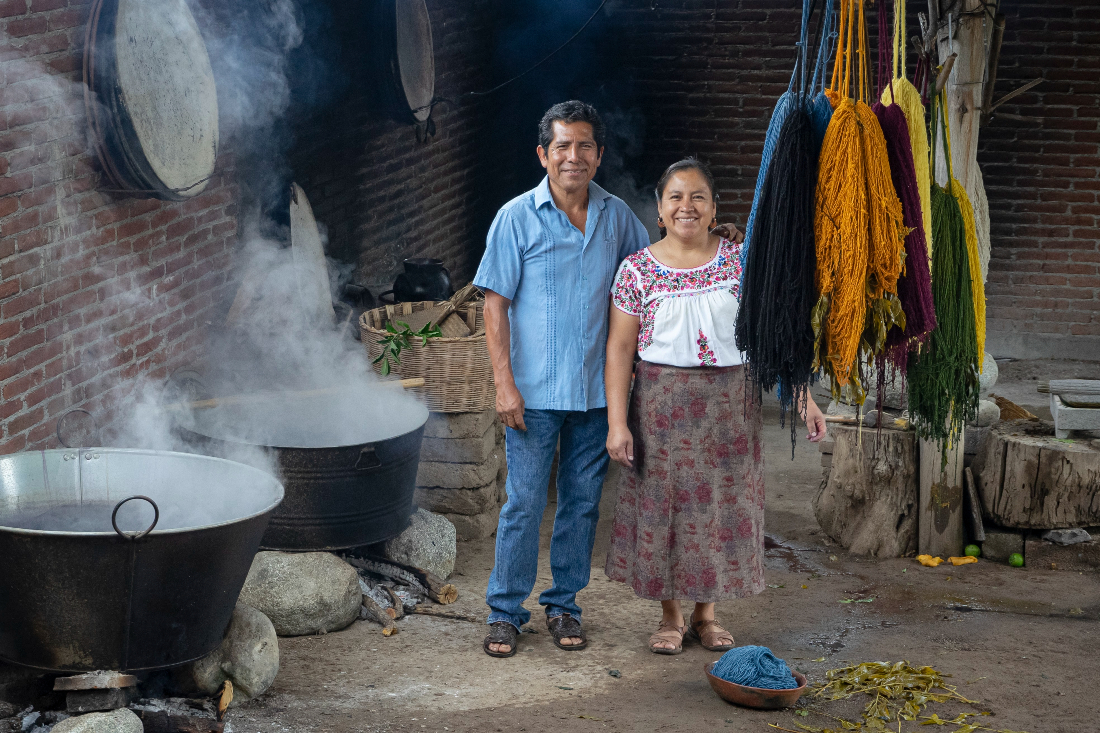 ********
********
Visit Jacobo at the
Day of the Dead Extravaganza at Casa de la Cuesta
Altar Talks, Oaxacan Master Weaver Exhibit and Sale
Mask Museum Tours, Oaxaca Wood Carvings
Friday, Saturday, Sunday, October 29, 30 & 31 and Monday, November 1
1:00 - Talk on Traditions of the Day of the Dead Altar
1:30-4:30 - Open House at Mask Museum and Oaxaca Rug Weaver Exhibit & Sale
Casa de la Cuesta, Cuesta de San Jose 32, Colonia Azteca
Admission is free
Master Zapotec weaver Jacobo Mendoza returns for the first time in 2 years to show and sell his masterpiece rugs and wall hangings for the Day of the Dead celebrations at Casa de la Cuesta B&B. Friday October 29 through Monday November 1 visitors can enjoy a Day of the Dead Extravaganza. Each day at 1:00 PM Heidi LeVasseur will give an informative talk on the traditions of Day of the Dead in front of her stunning personal altar. From 1:30-4:30 Jacobo Mendoza will show his weavings and give talks on natural dyes, Oaxacan folk art carver Blanca Gomez will display and sell her whimsical carved alebrije figures and paintings.
As a special treat, Another Face of Mexico / Otra Cara de Mexico Mask Museum, which hosts a special collection of 650 ceremonial masks - will be open to the public during the show. There are select masks for sale as well.
There is no admission fee for the Mask Museum, Altar Talks or Exhibitions. Masks are required.
On Sunday and Monday 2:00-4:00 you can have your face painted.
**************
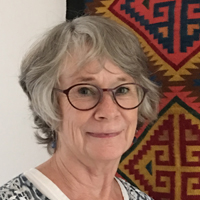
Barbara Erickson lives in San Miguel de Allende. She retired after selling her business in Southern California and happily moved to Mexico with her husband of many years in 2003. She loves Mexican artesanía, traveling in Mexico, studying Spanish and being with friends.
